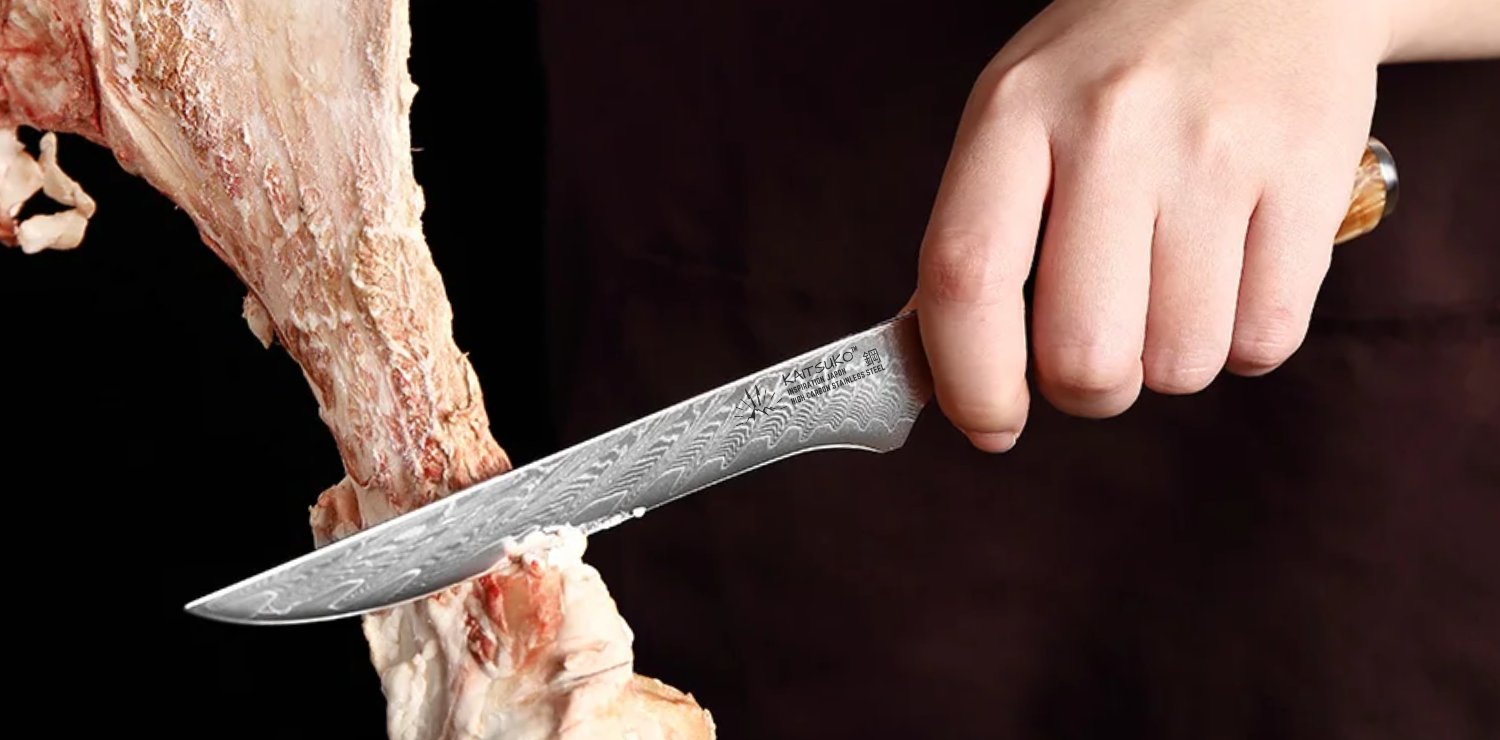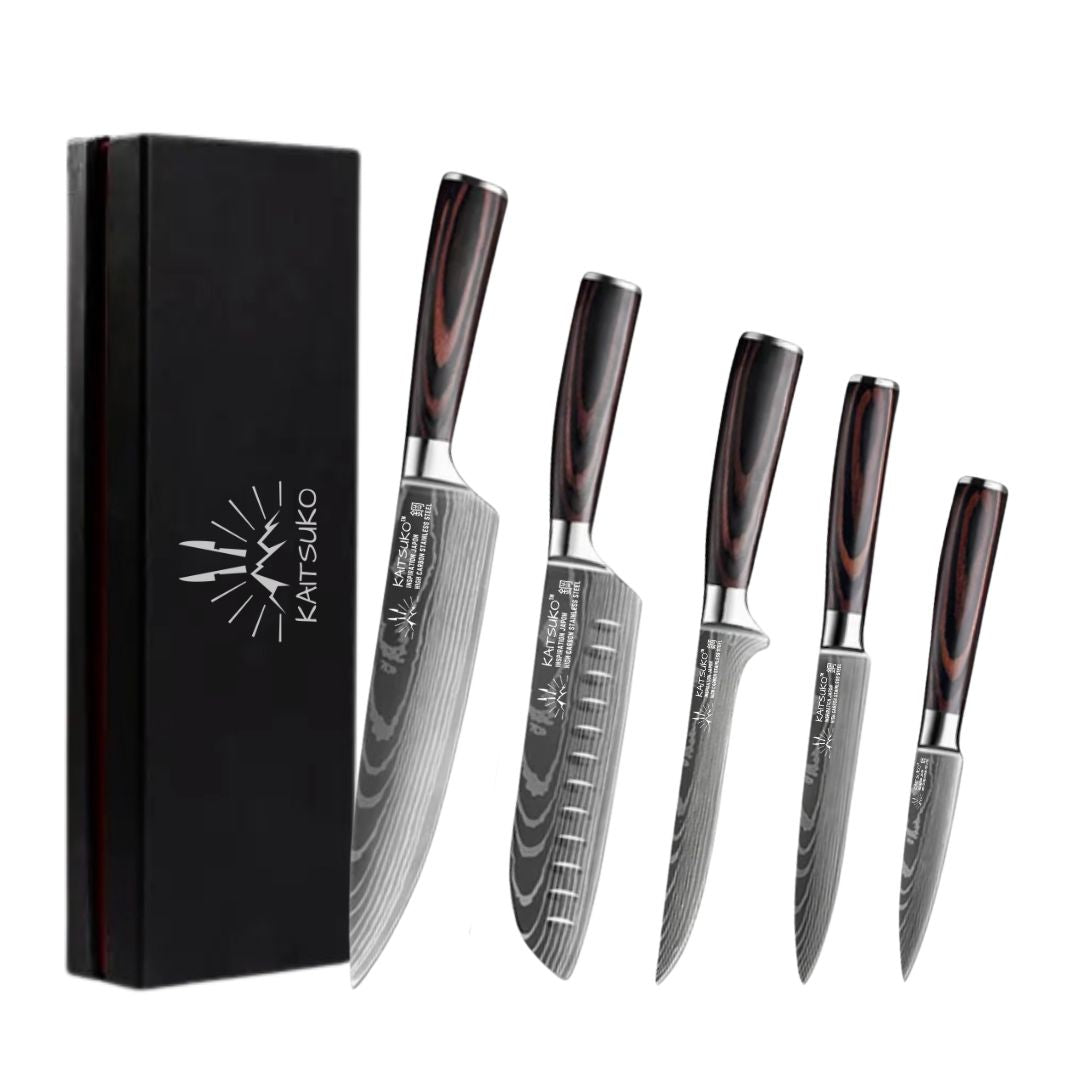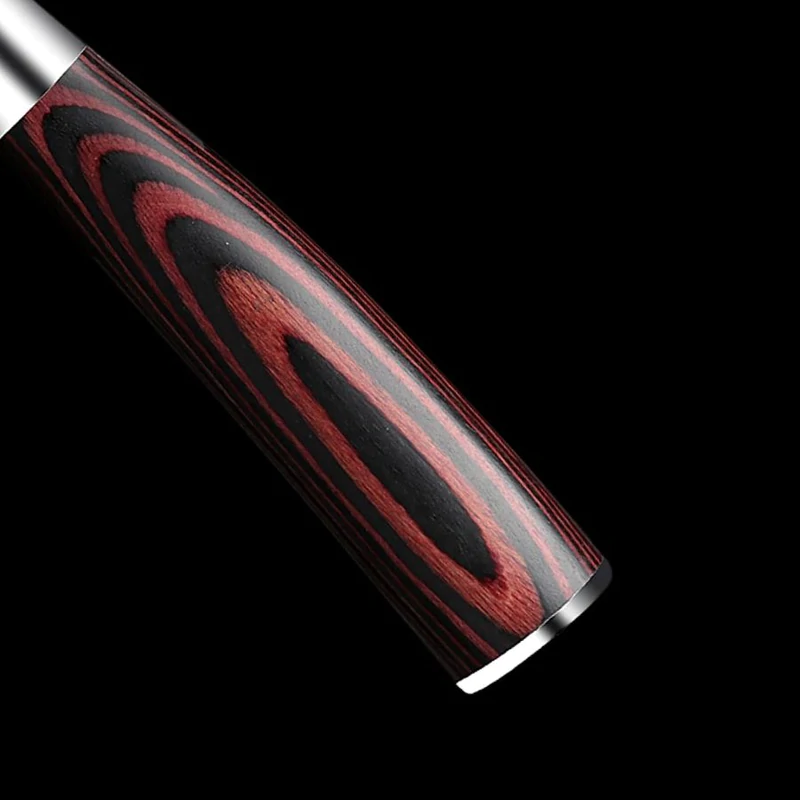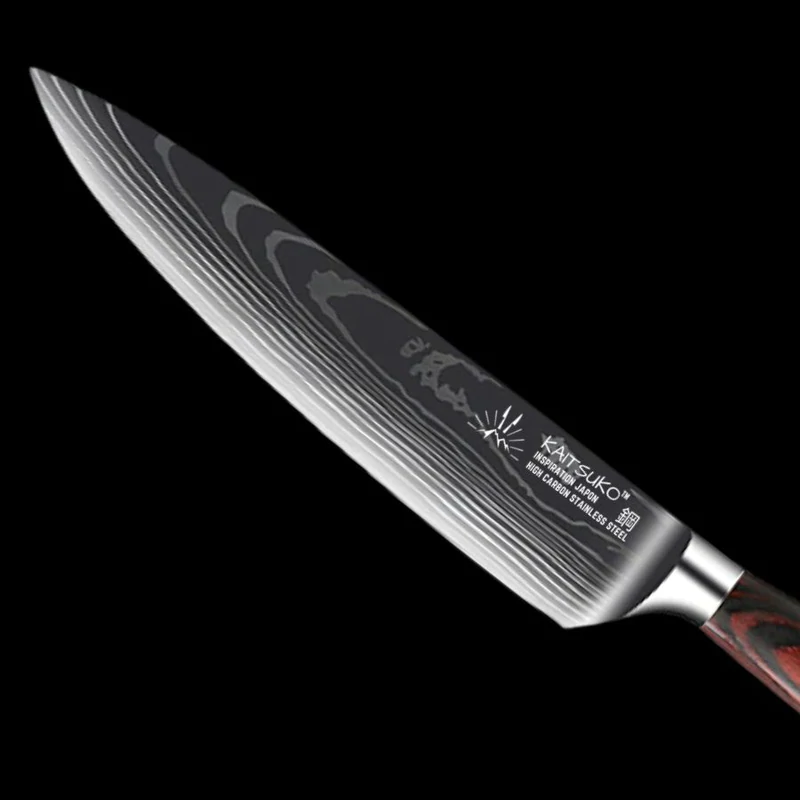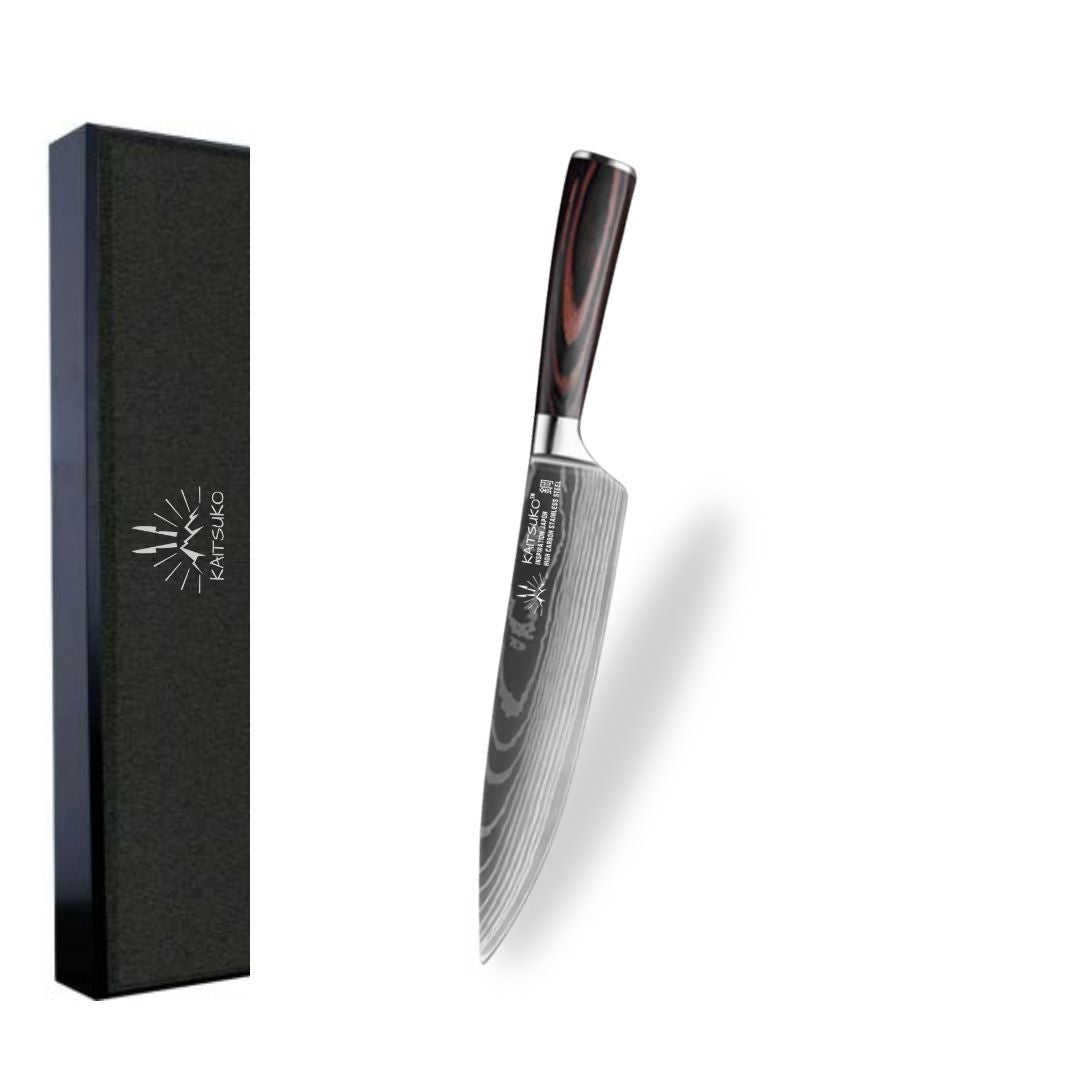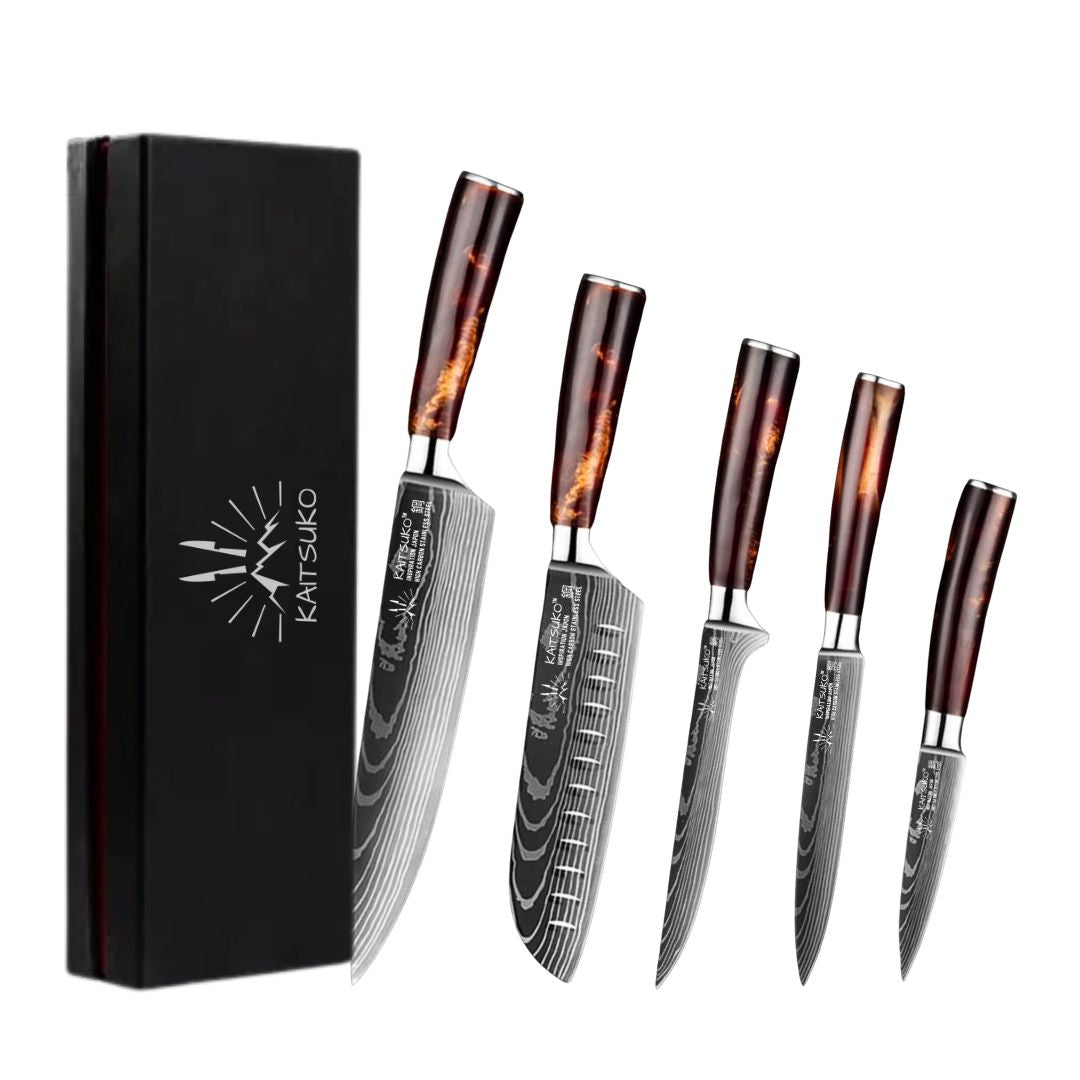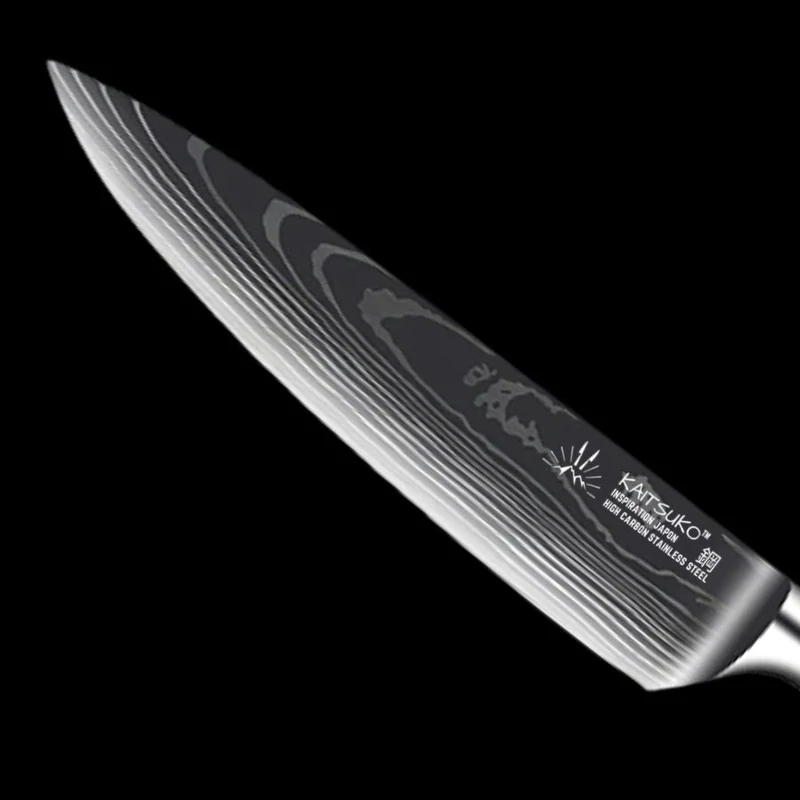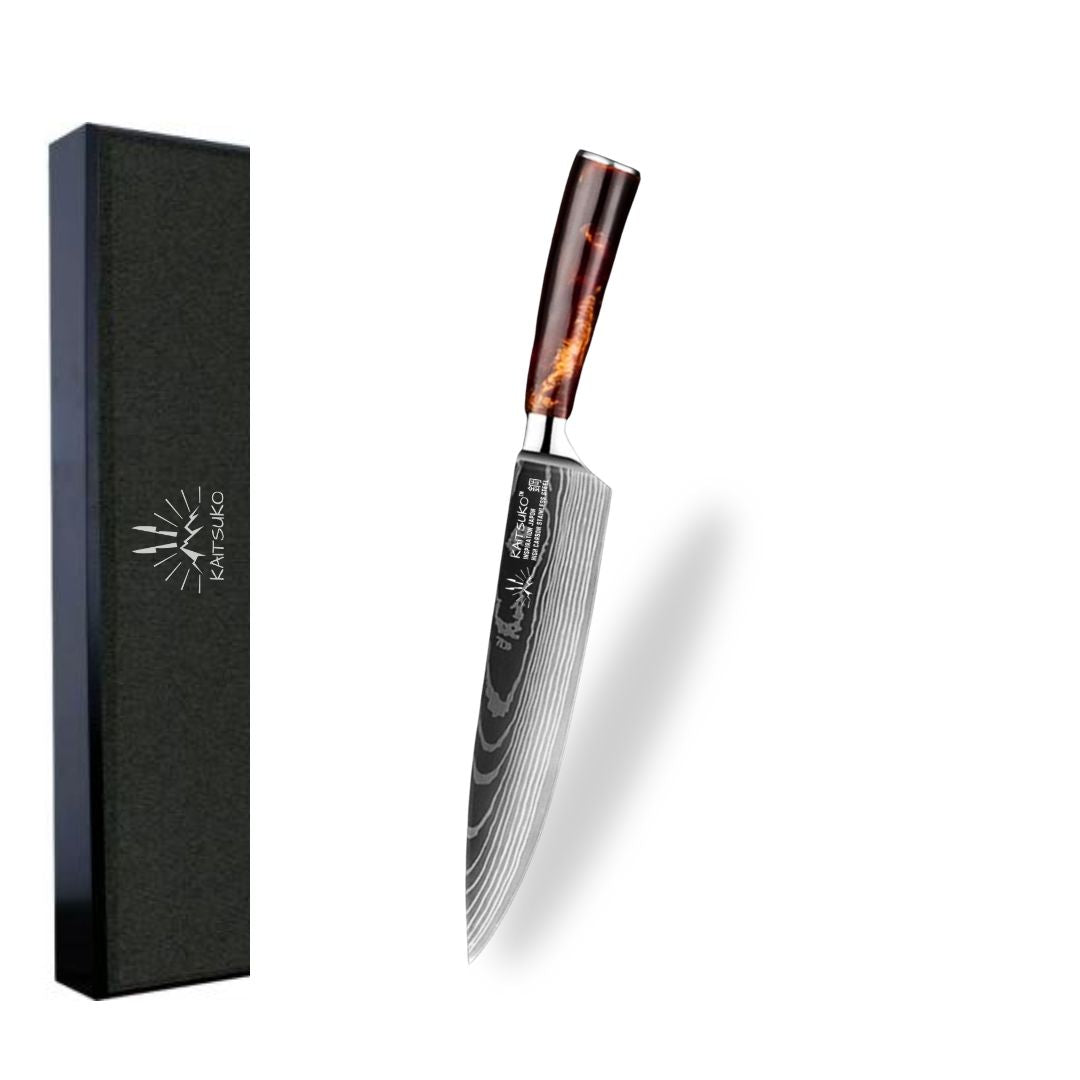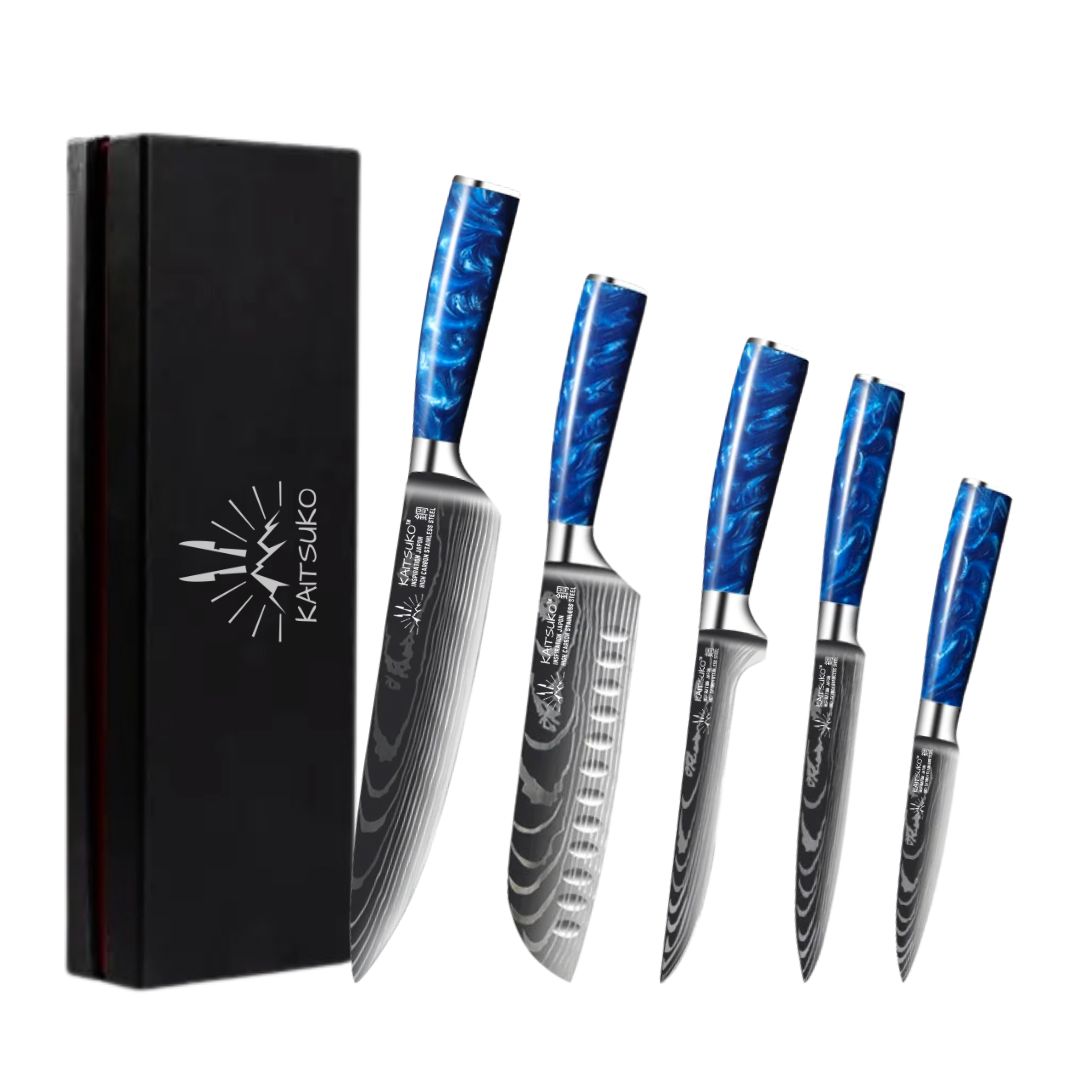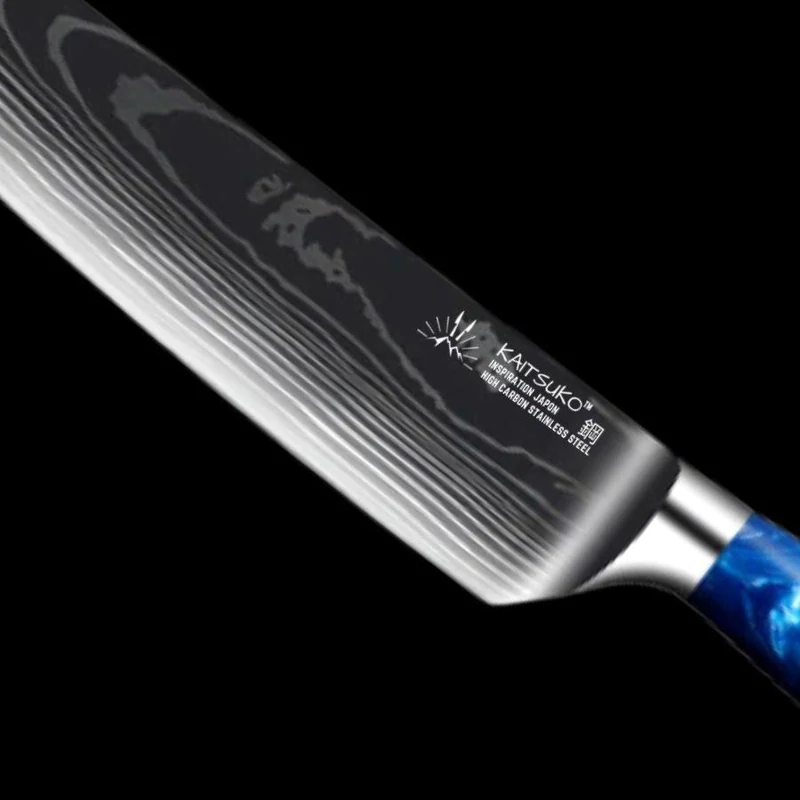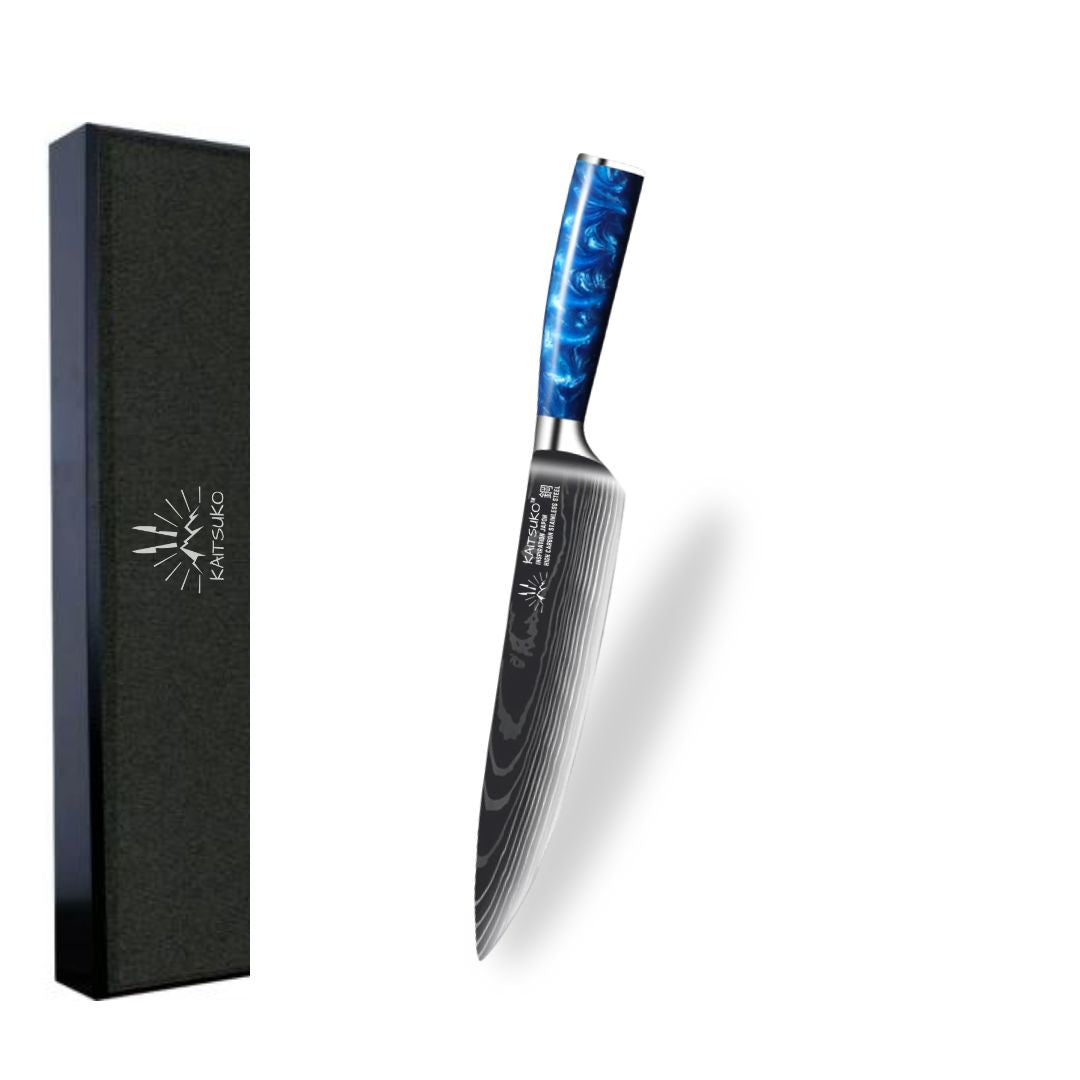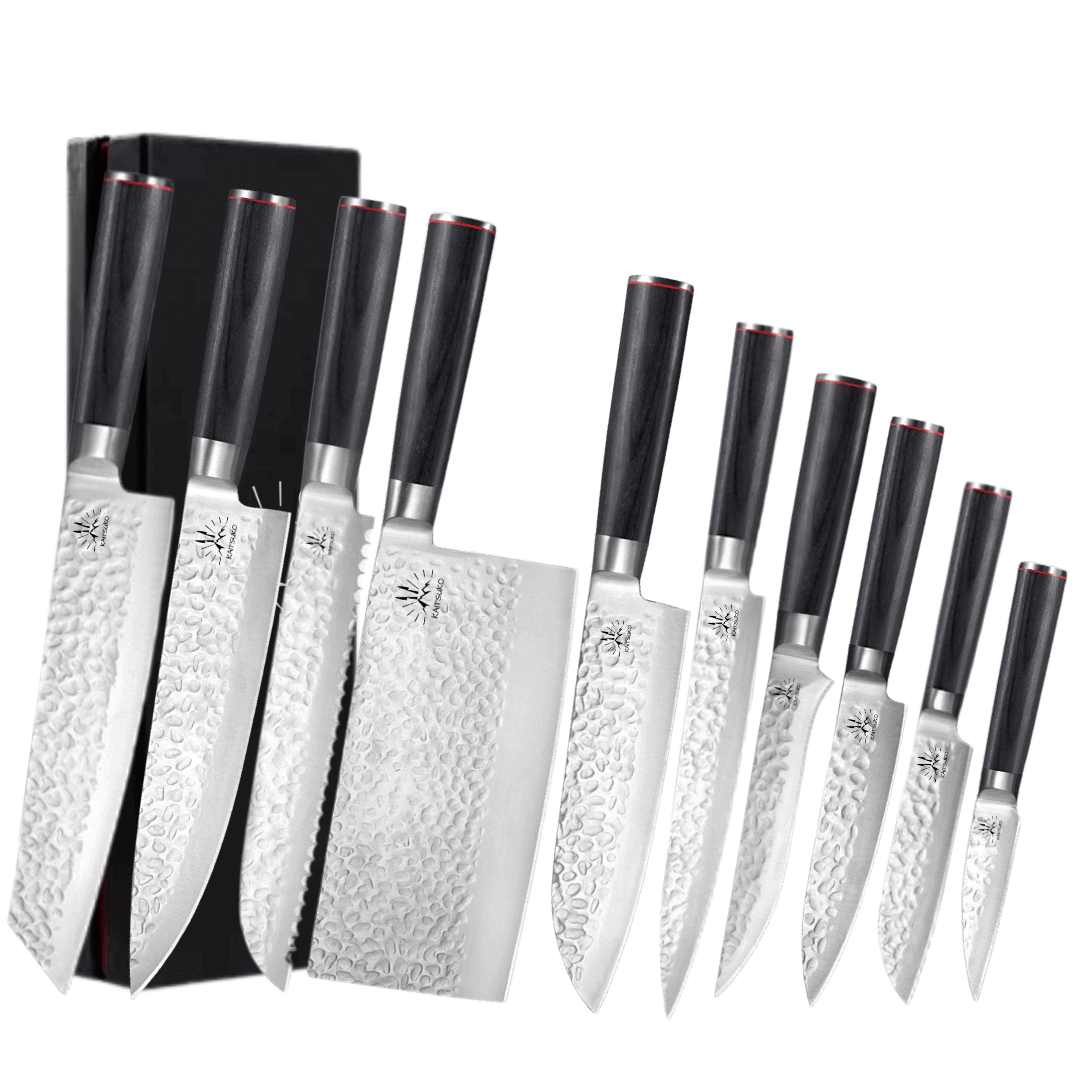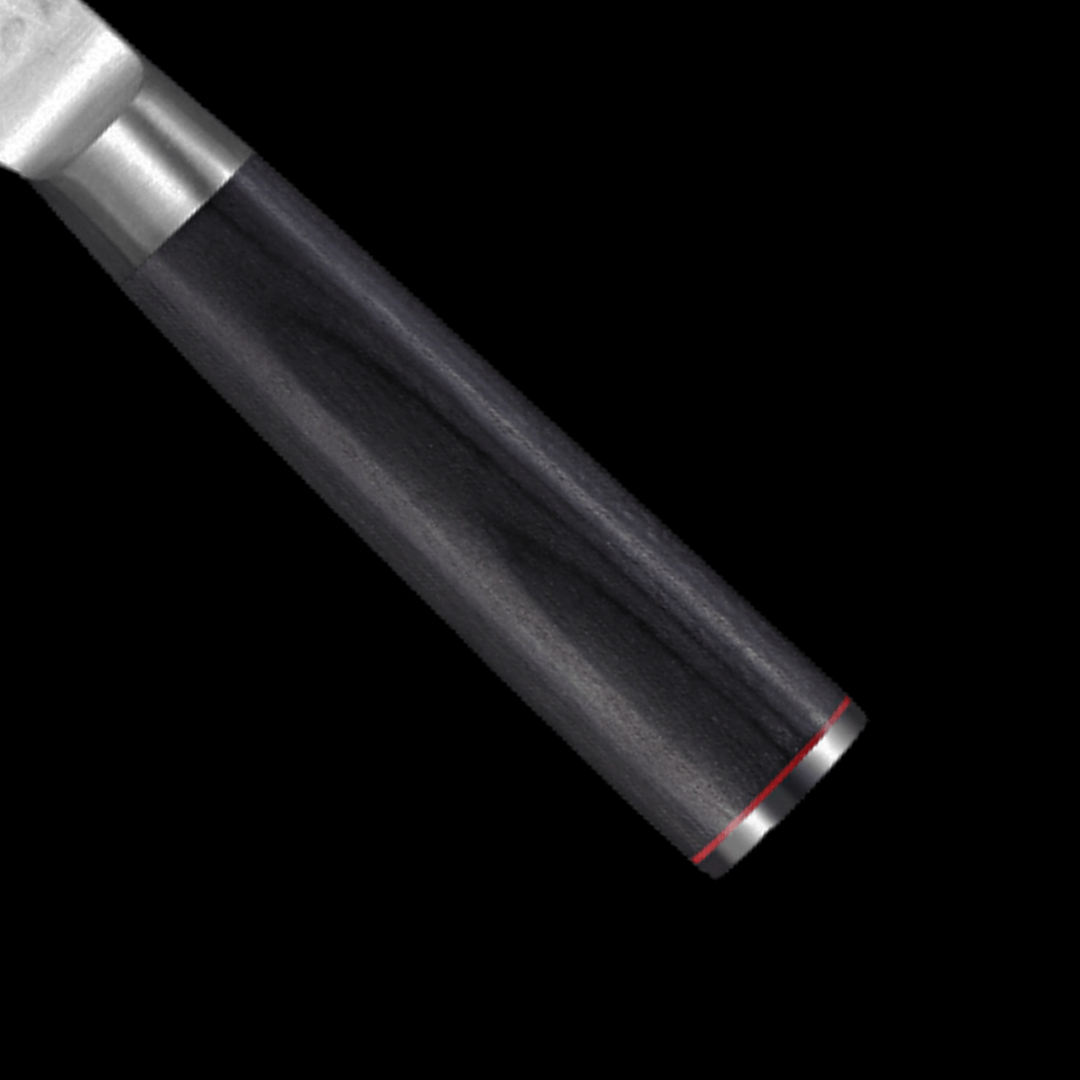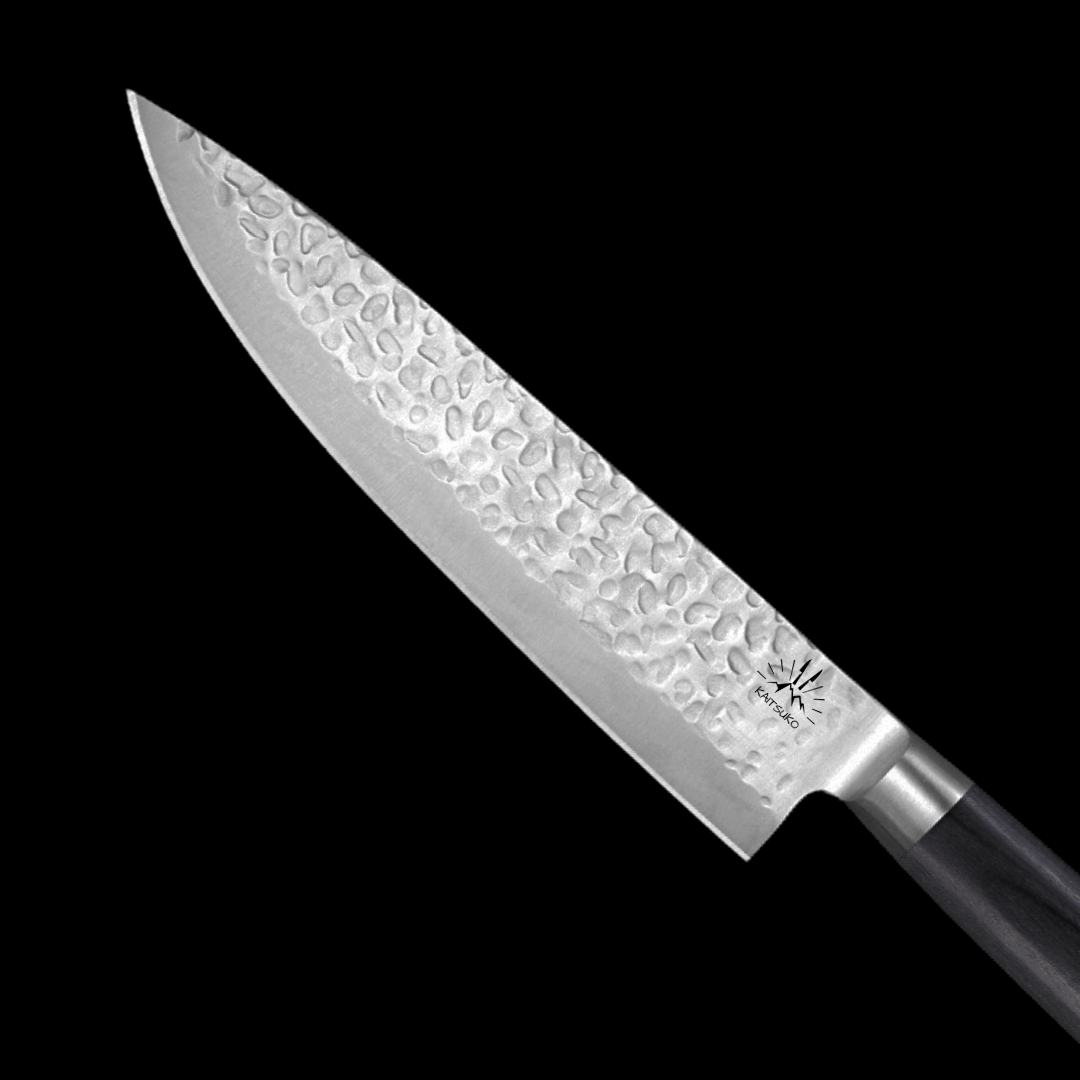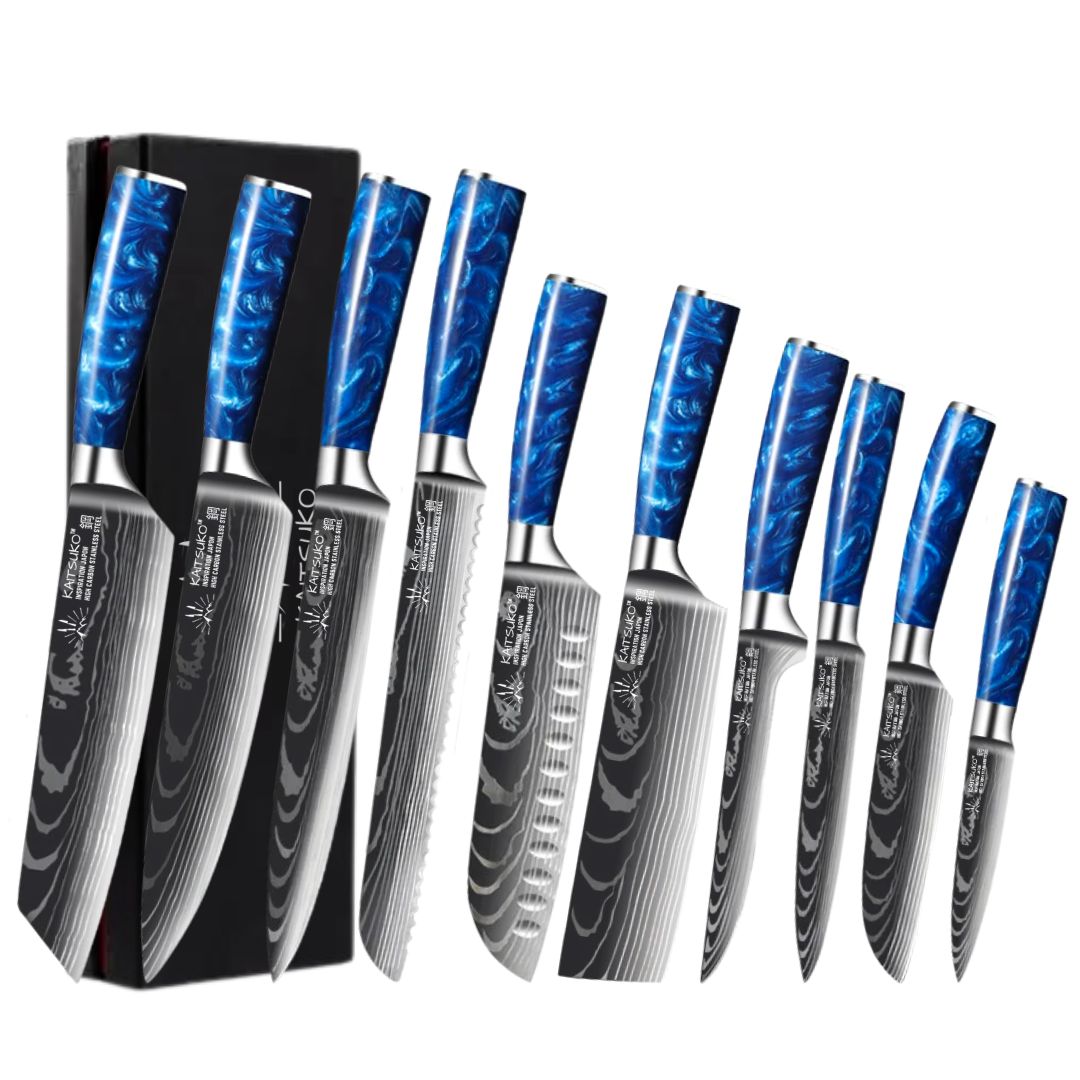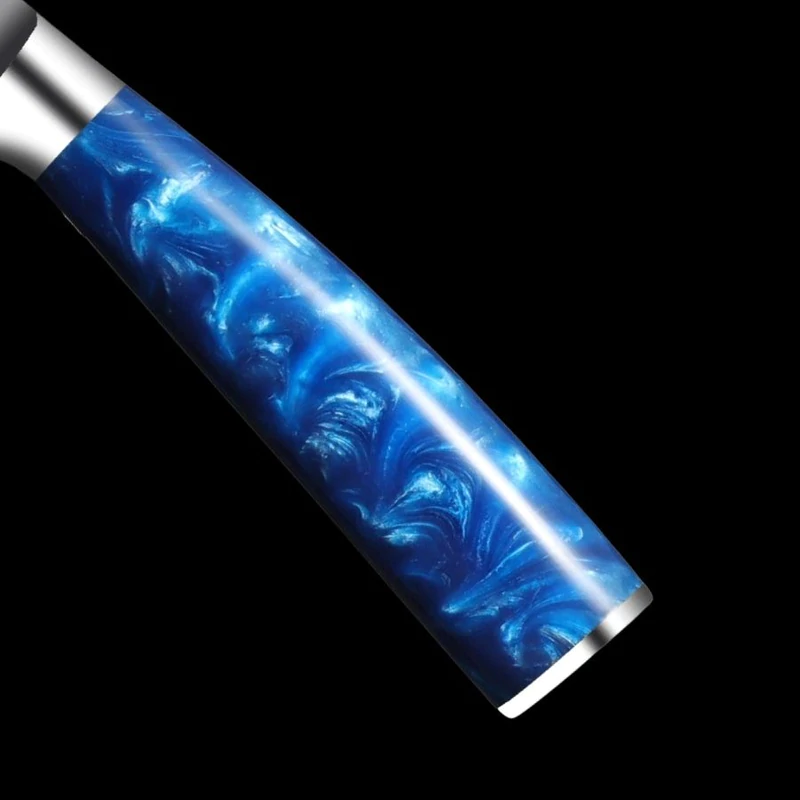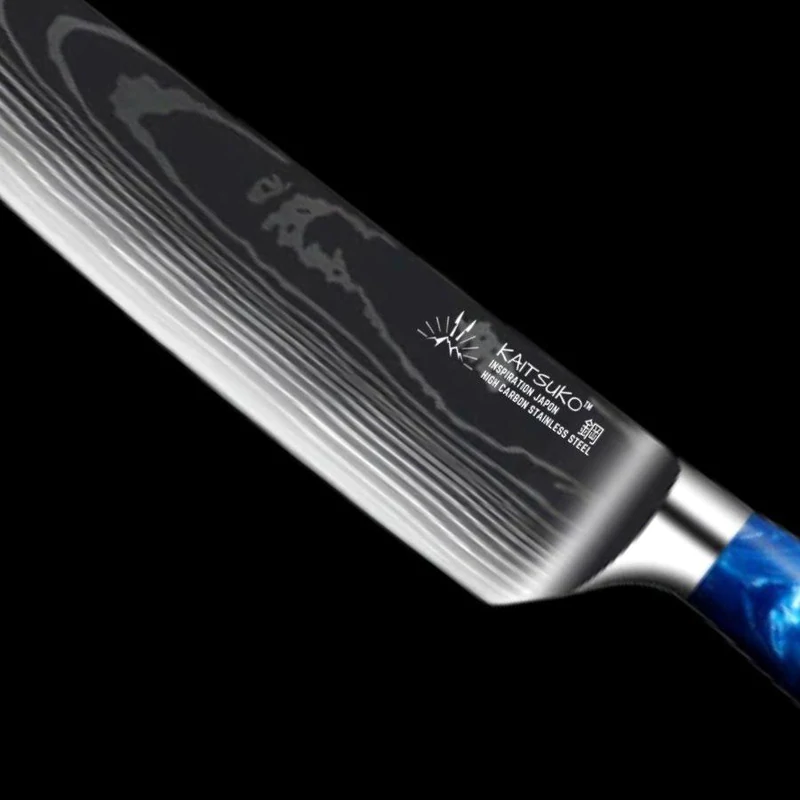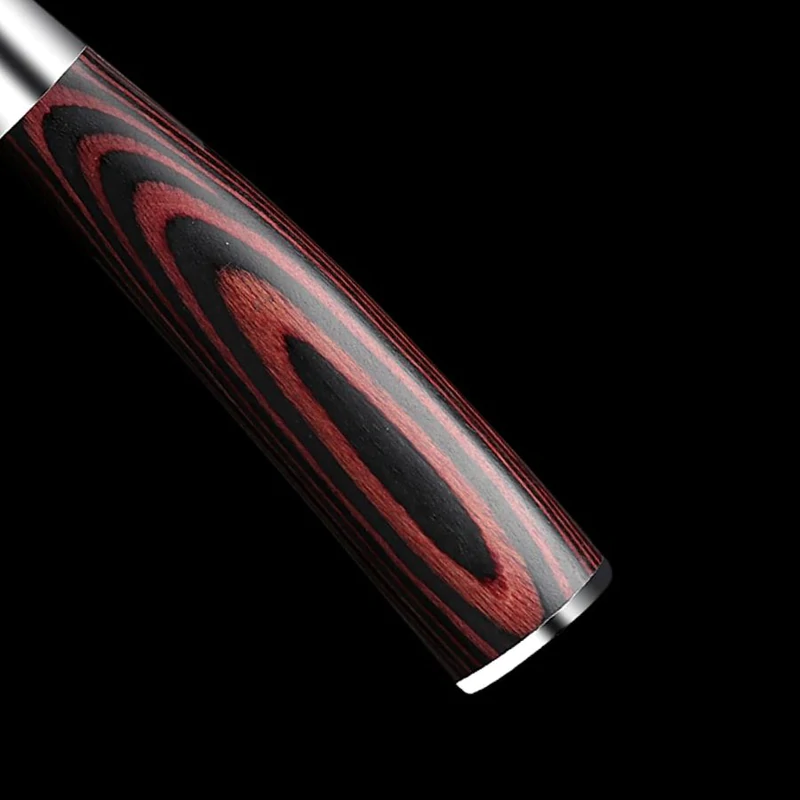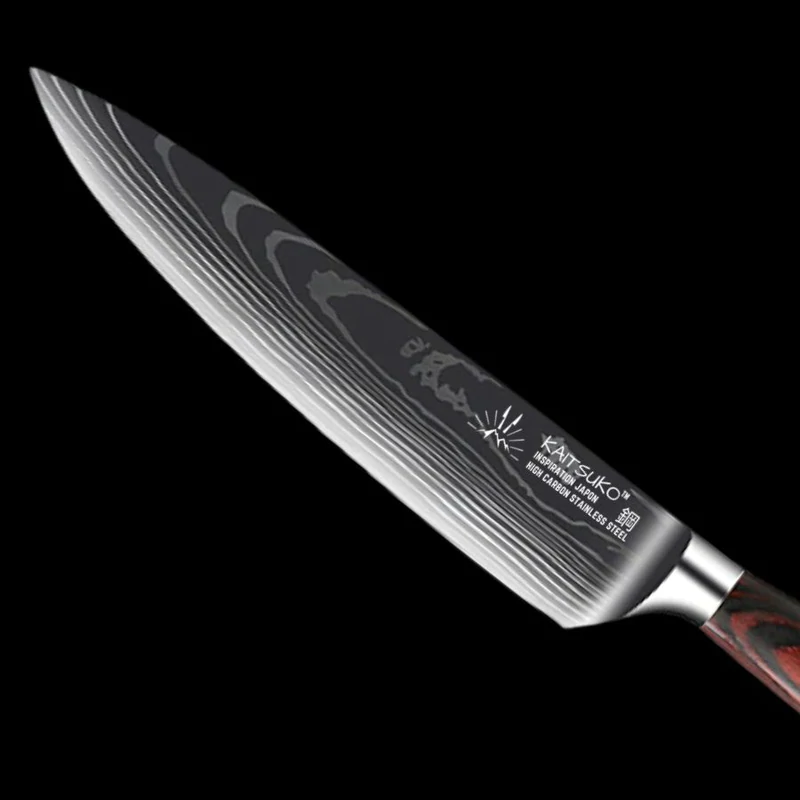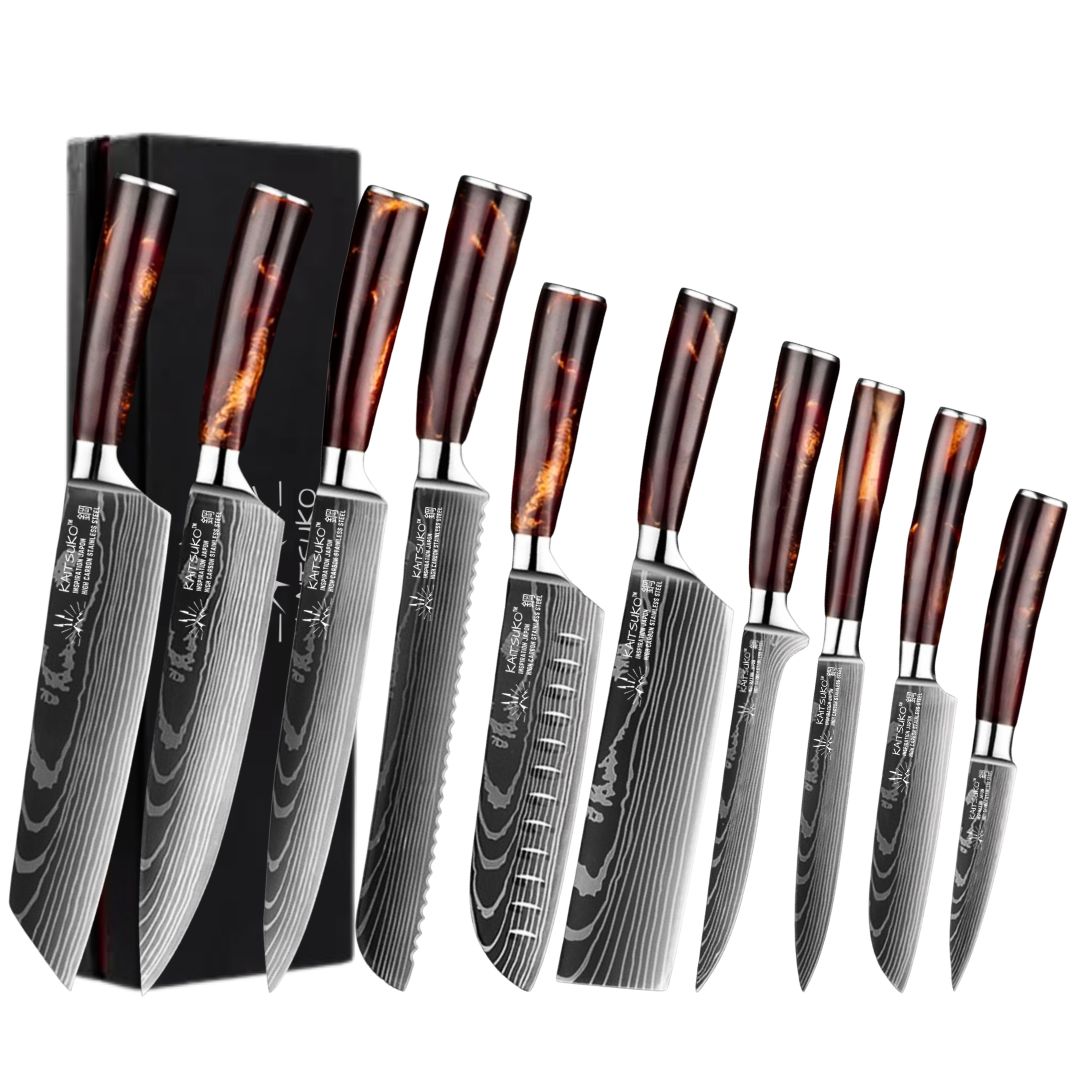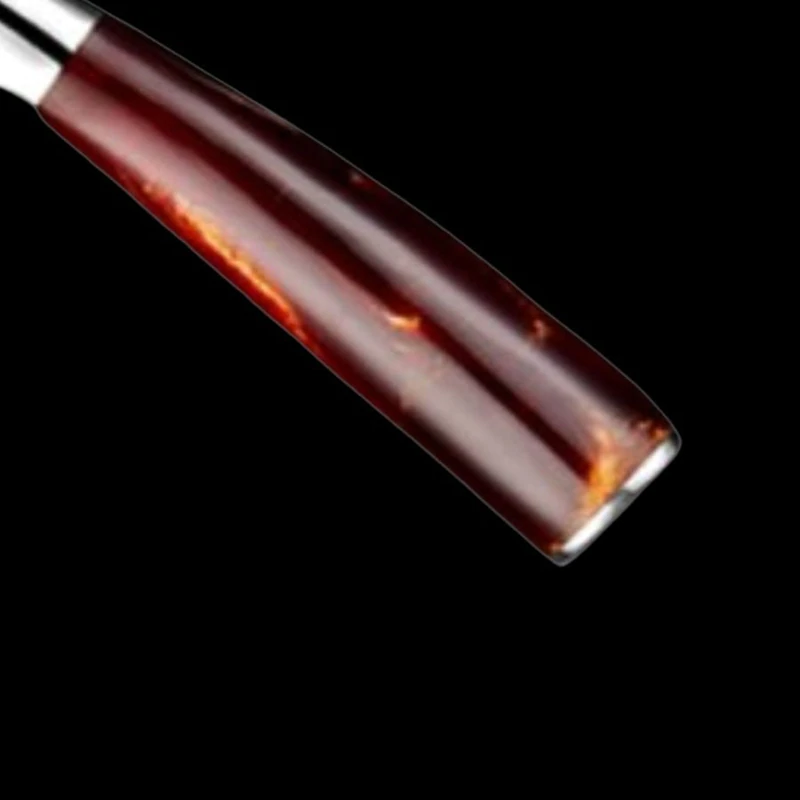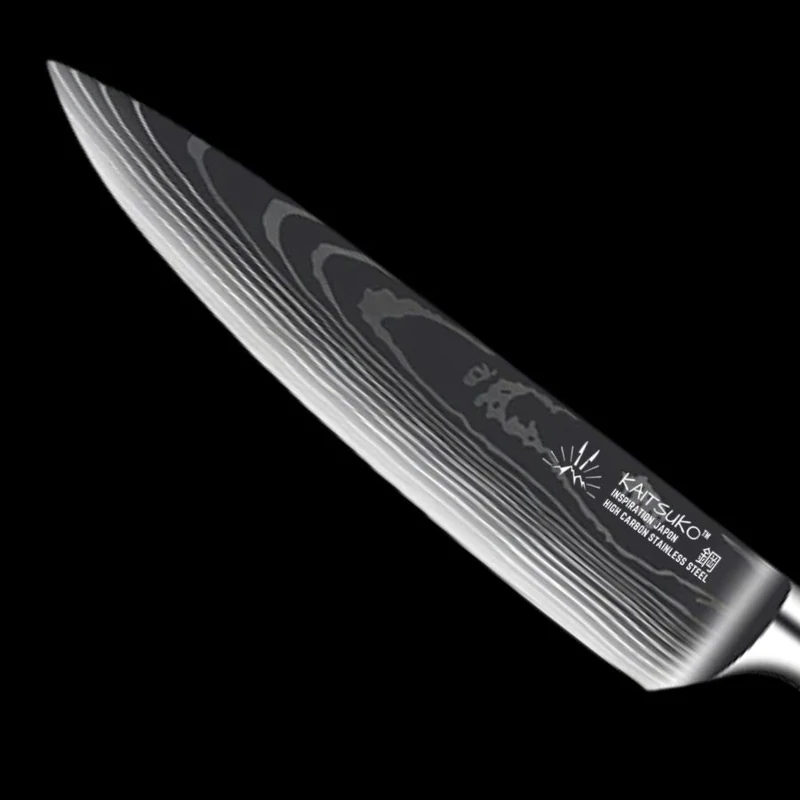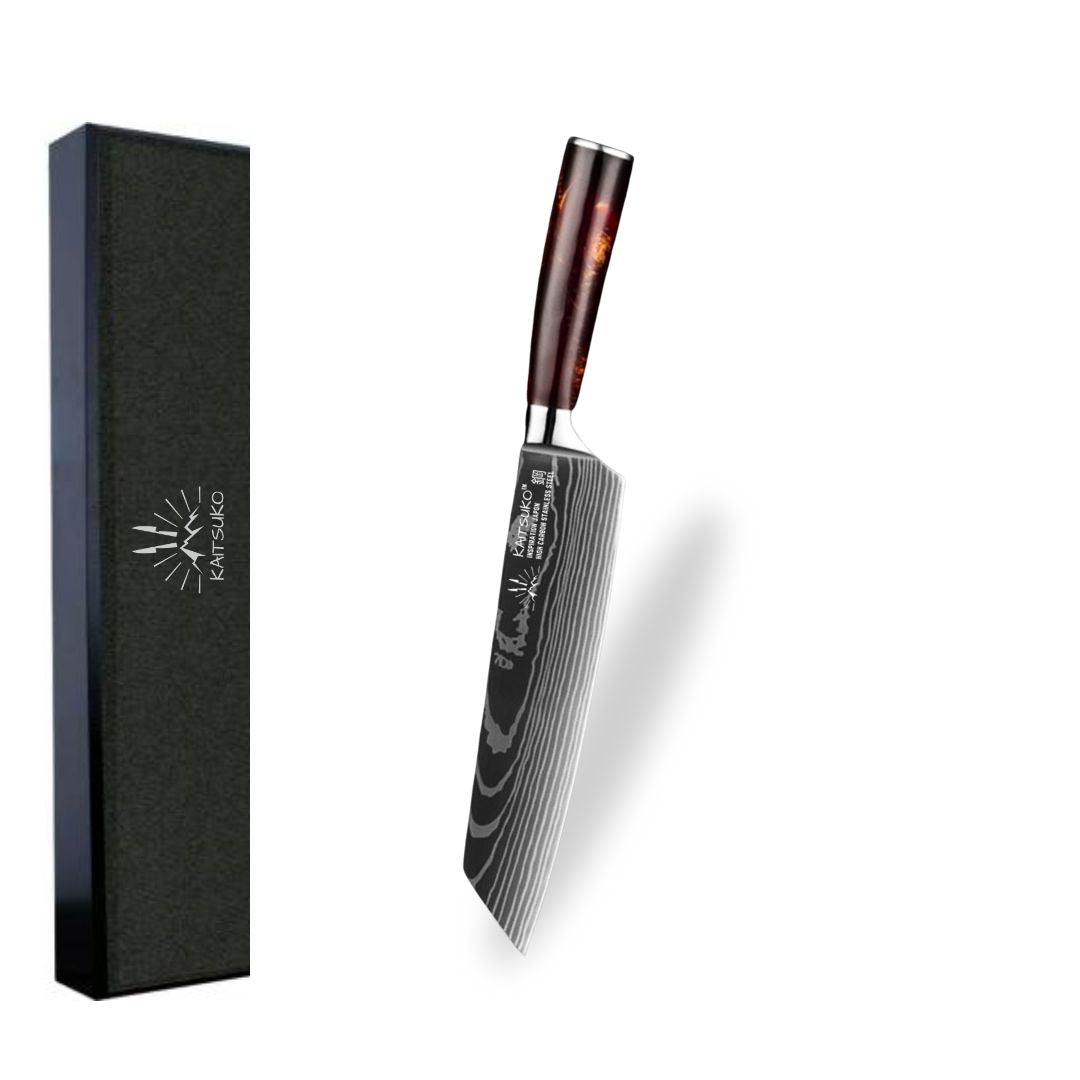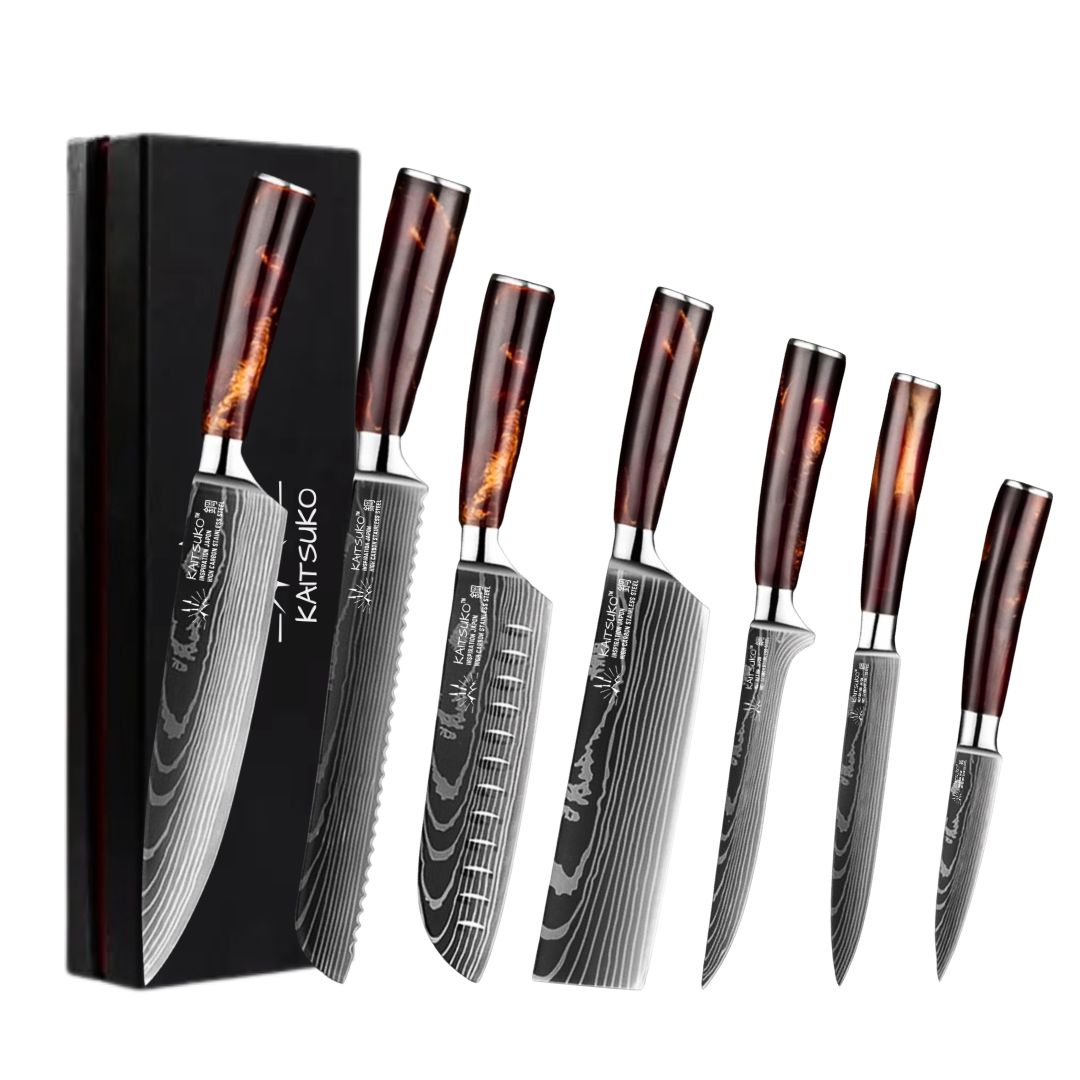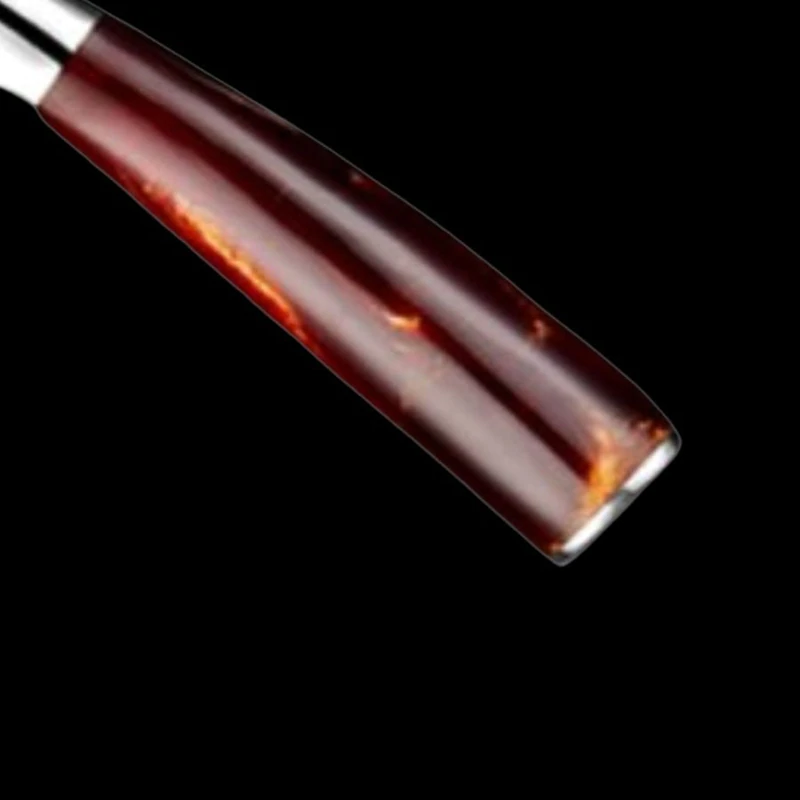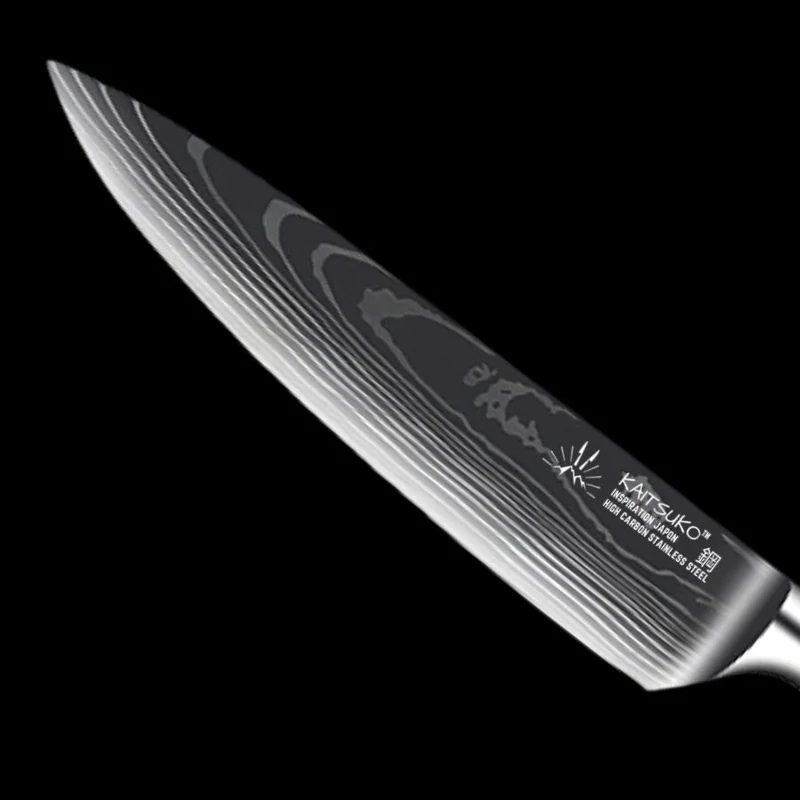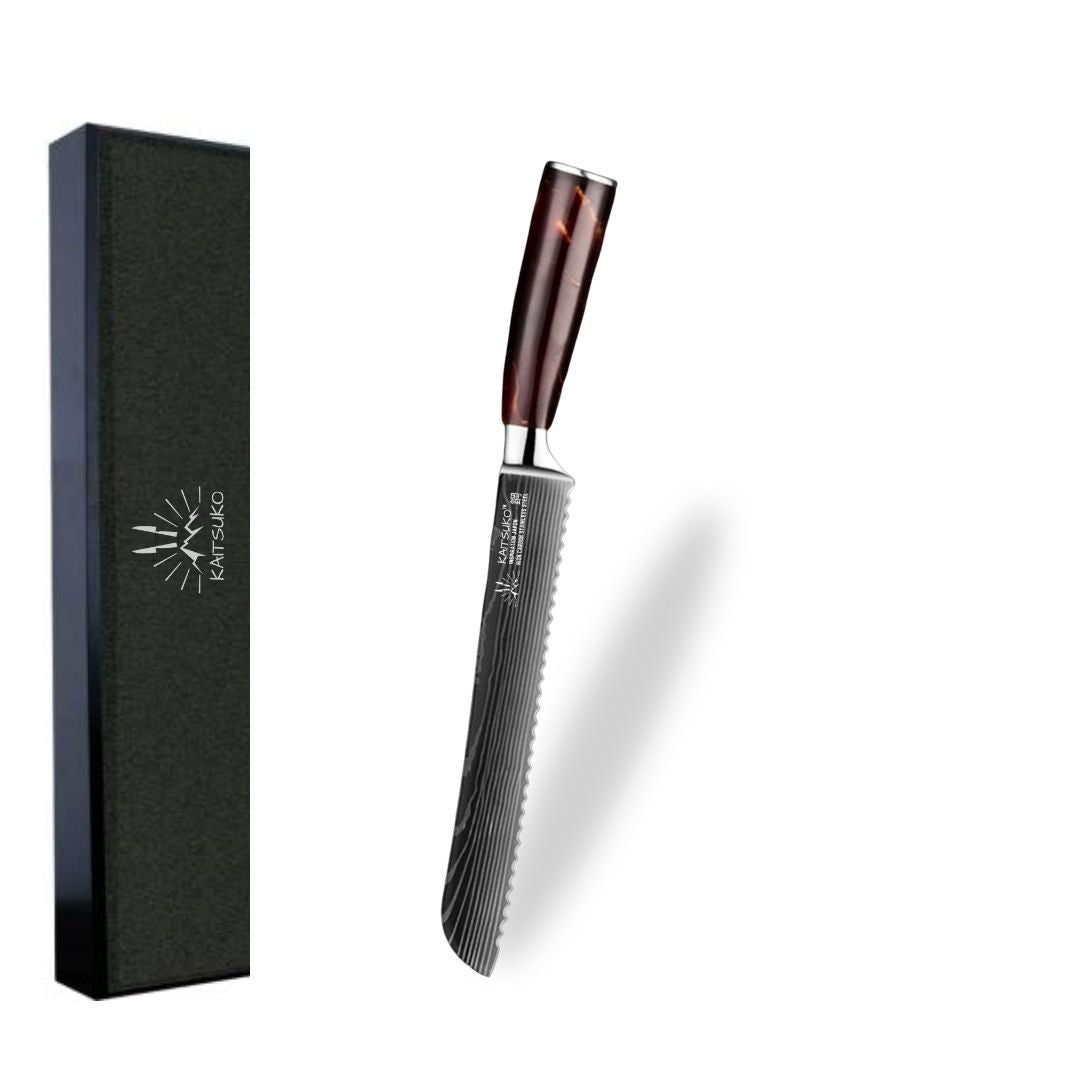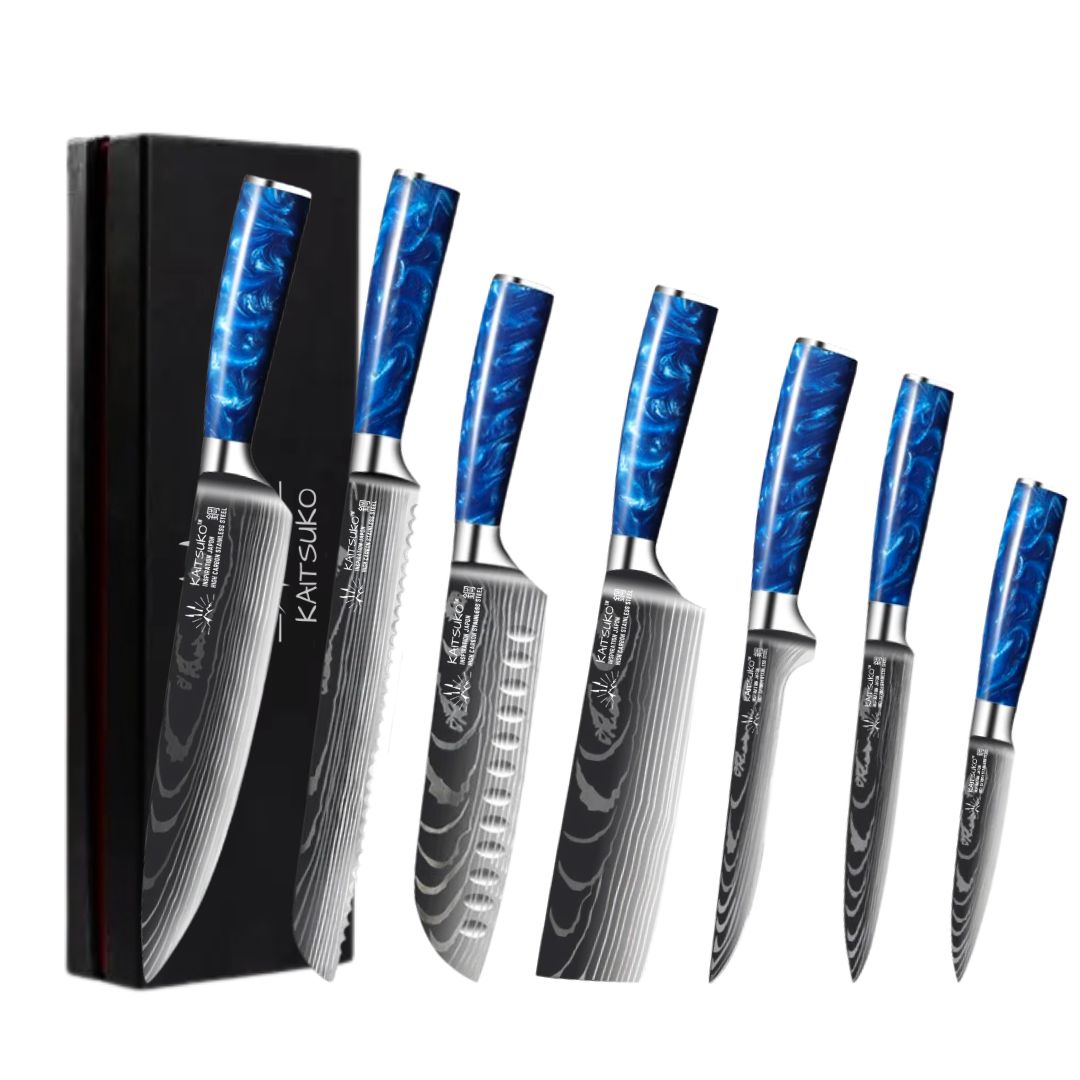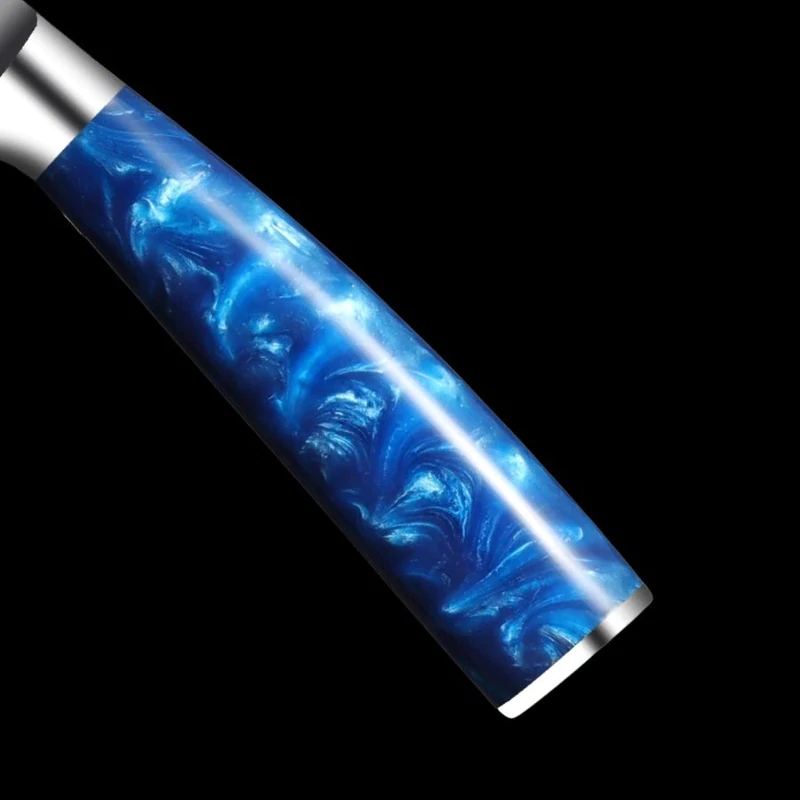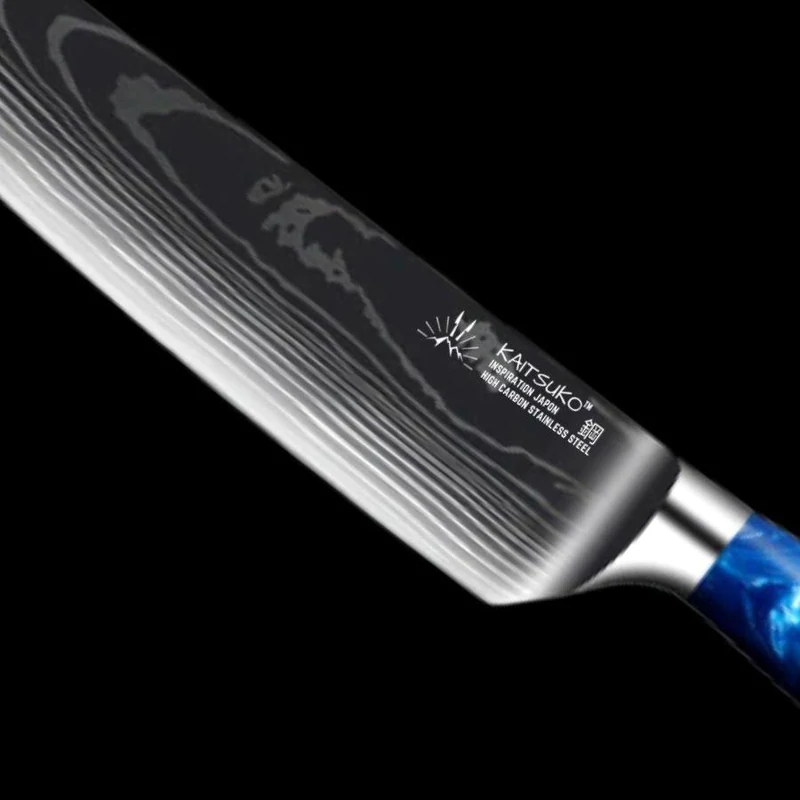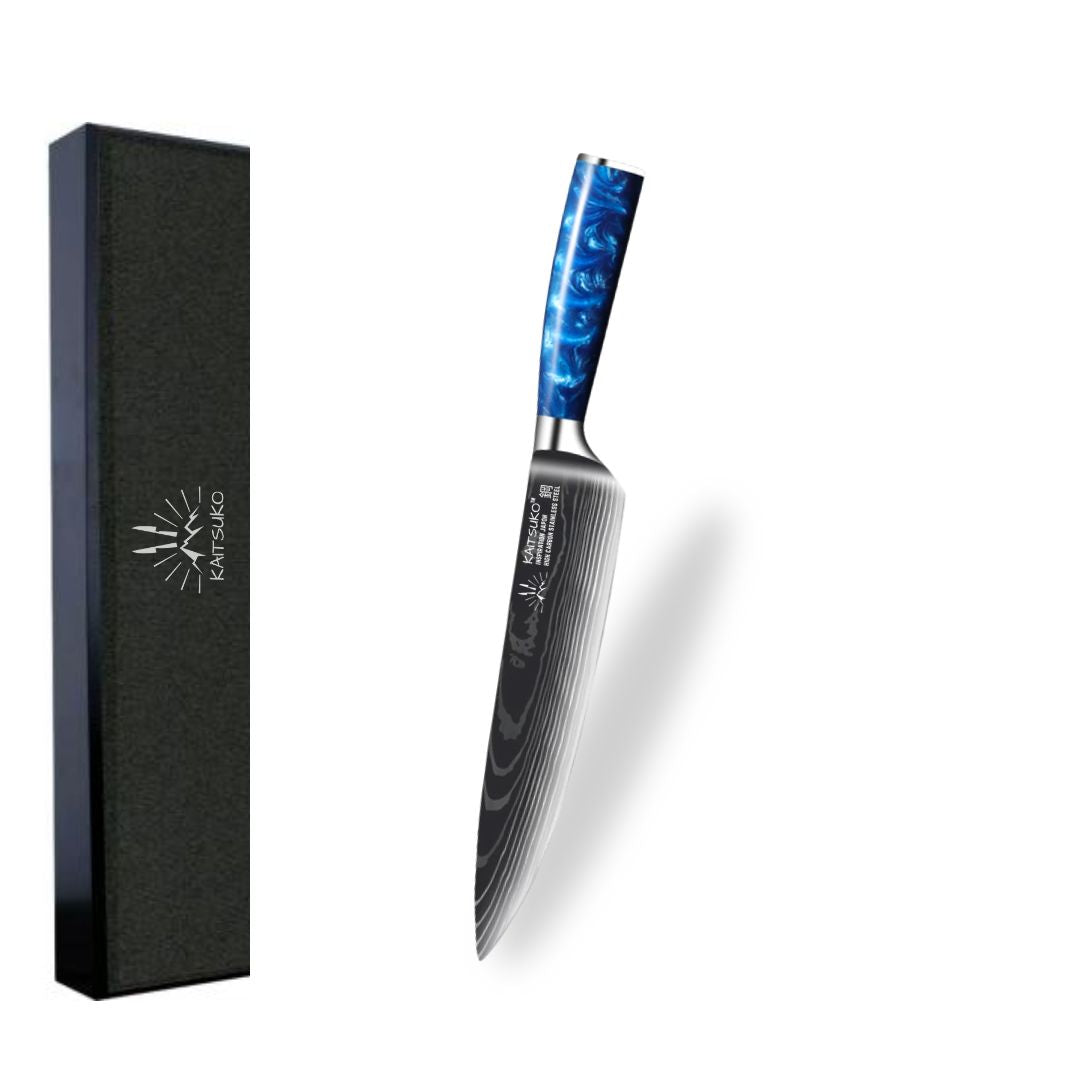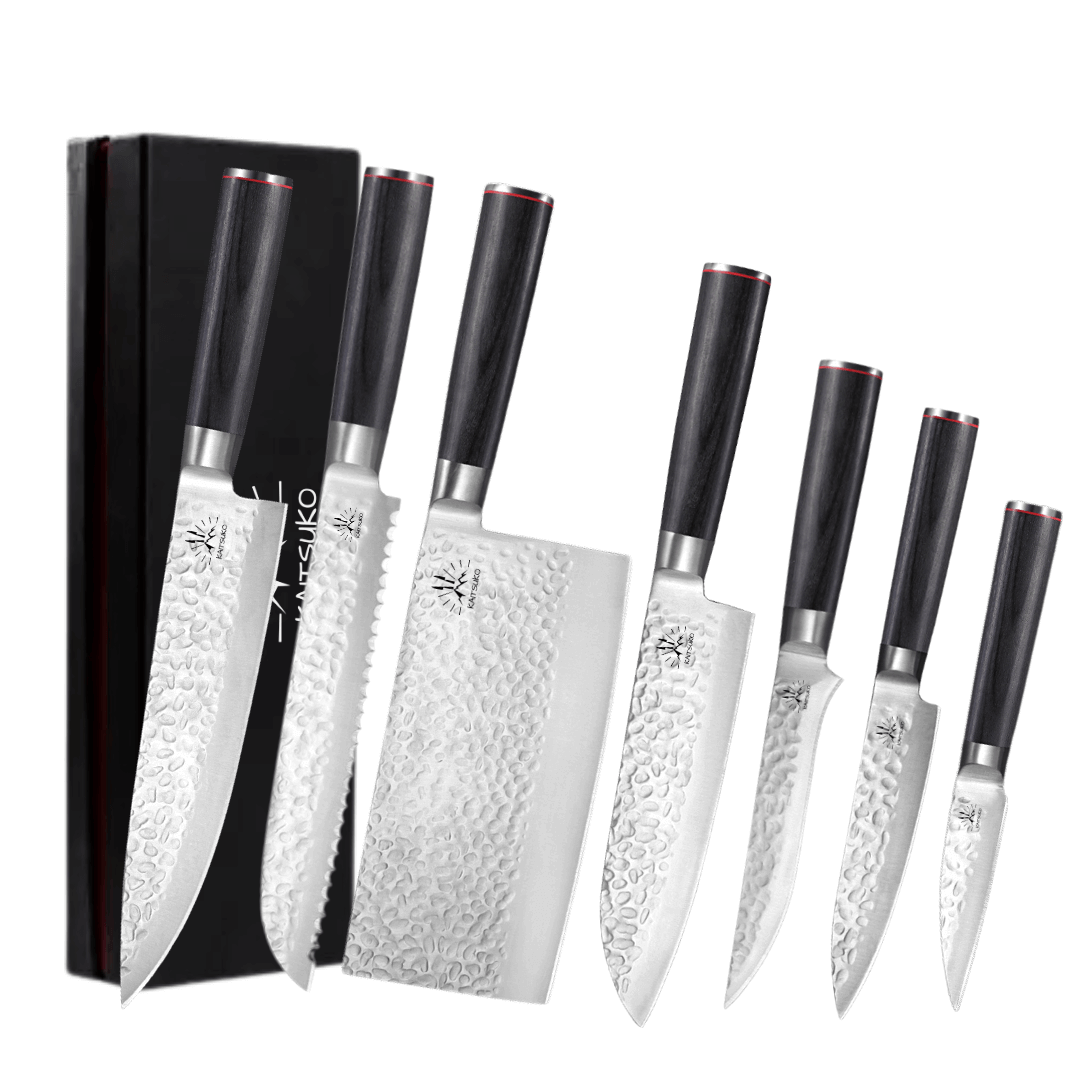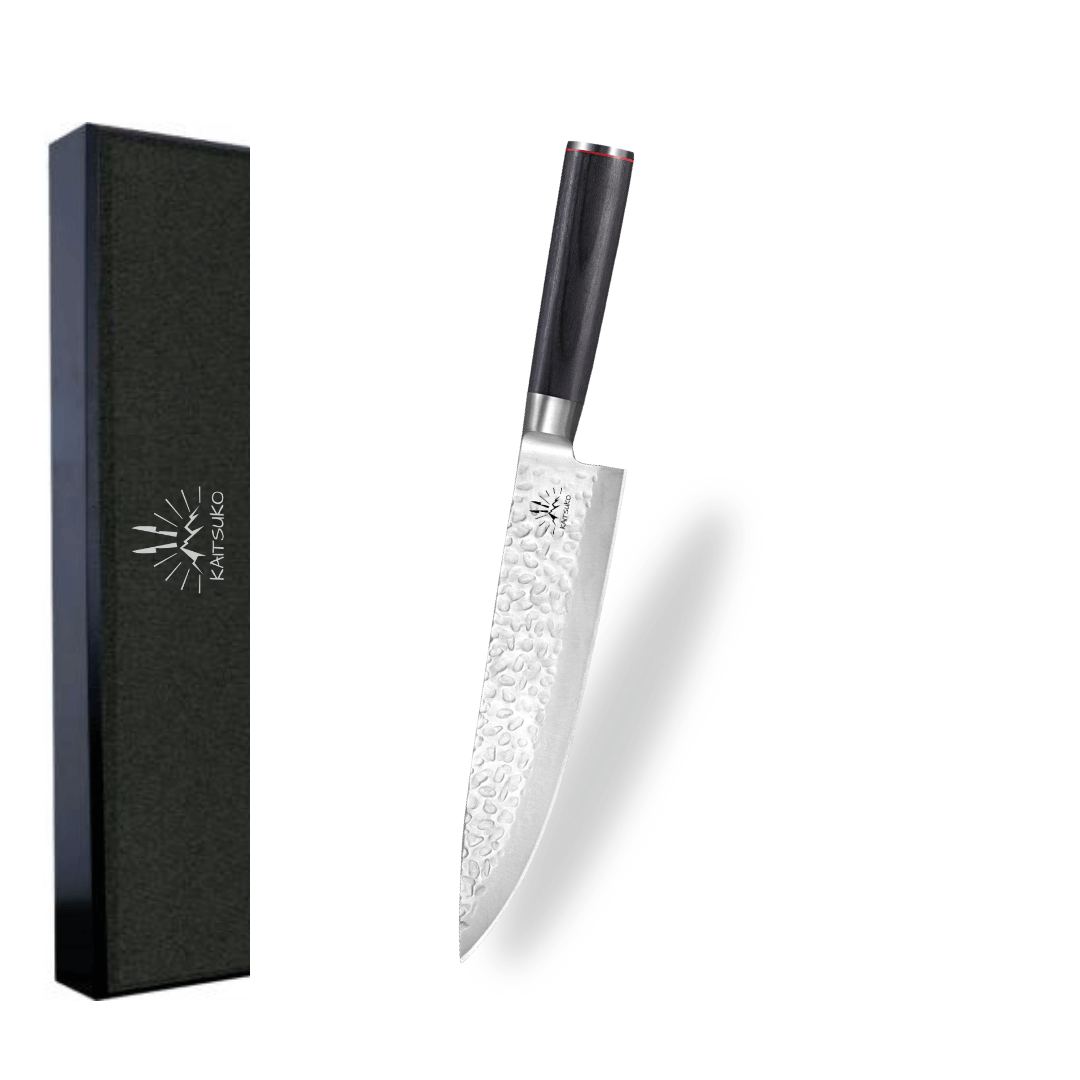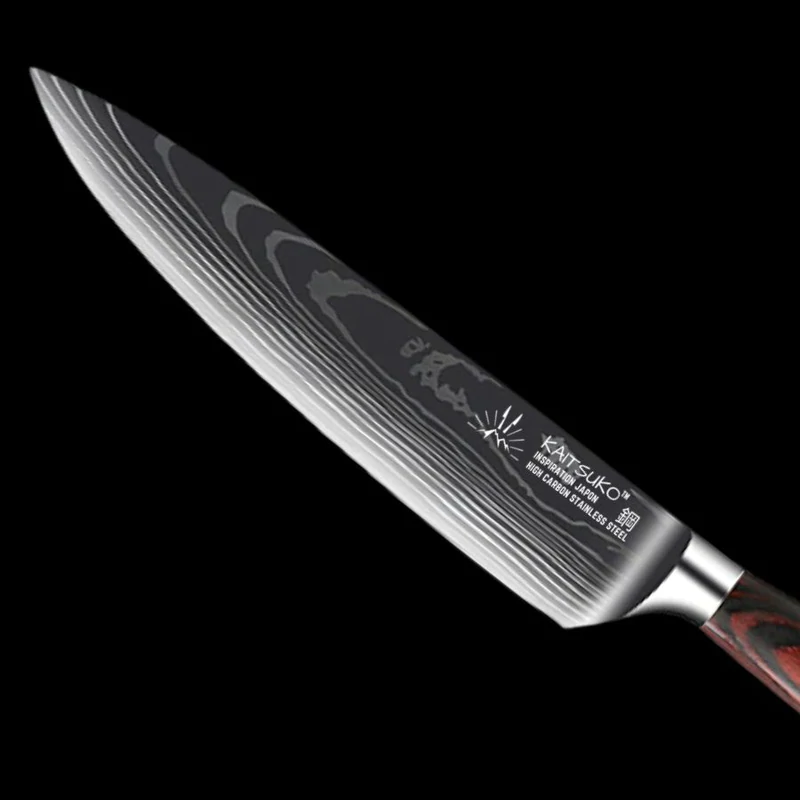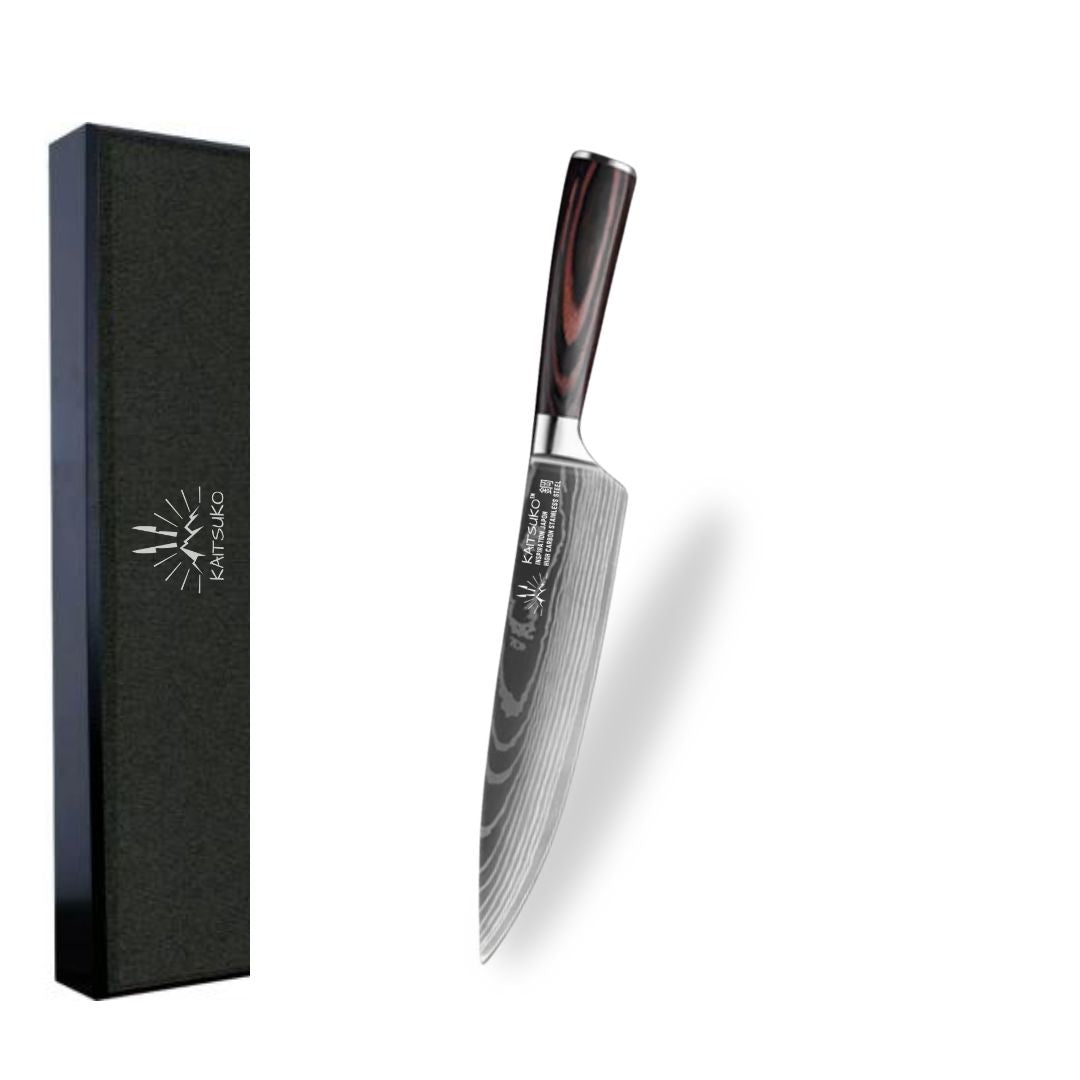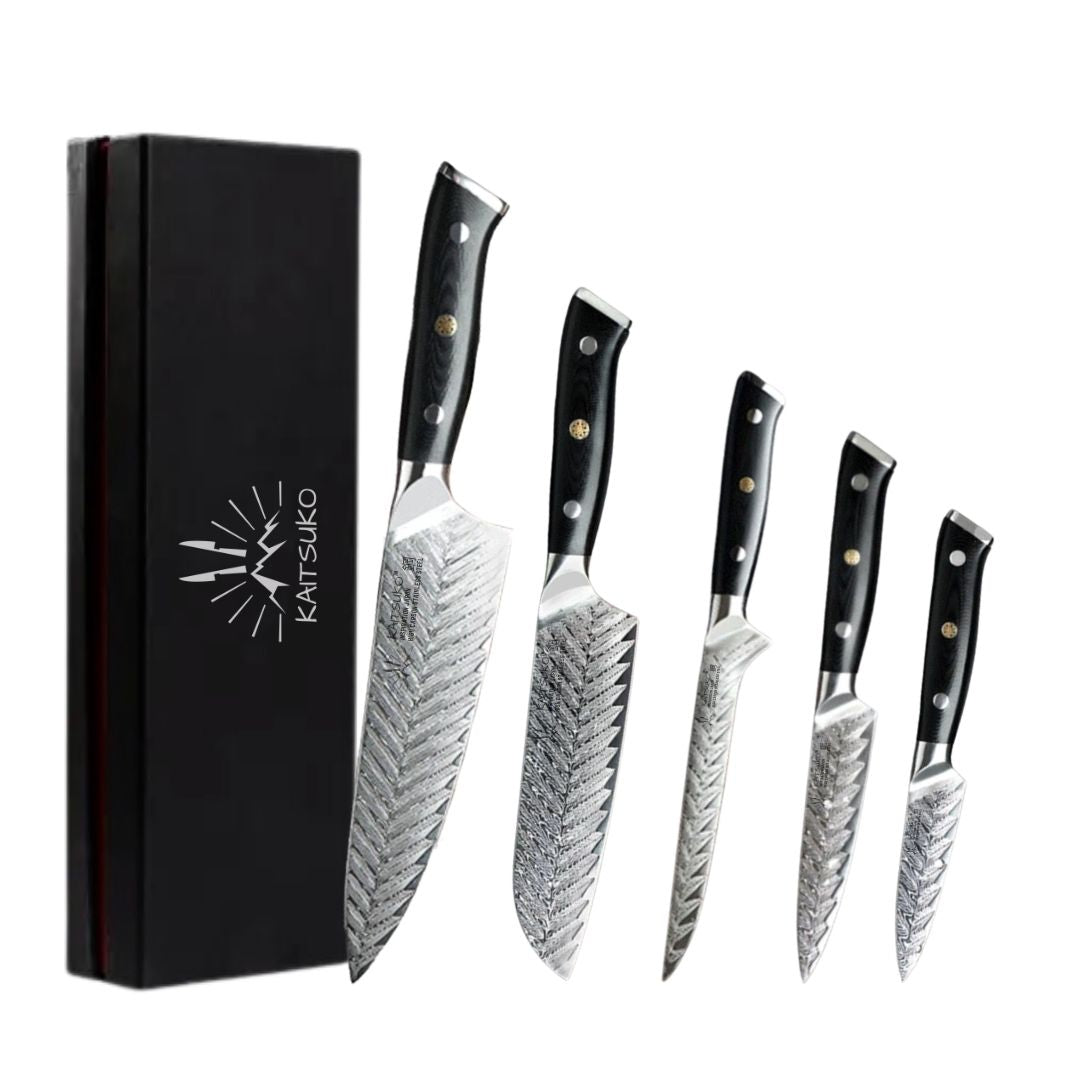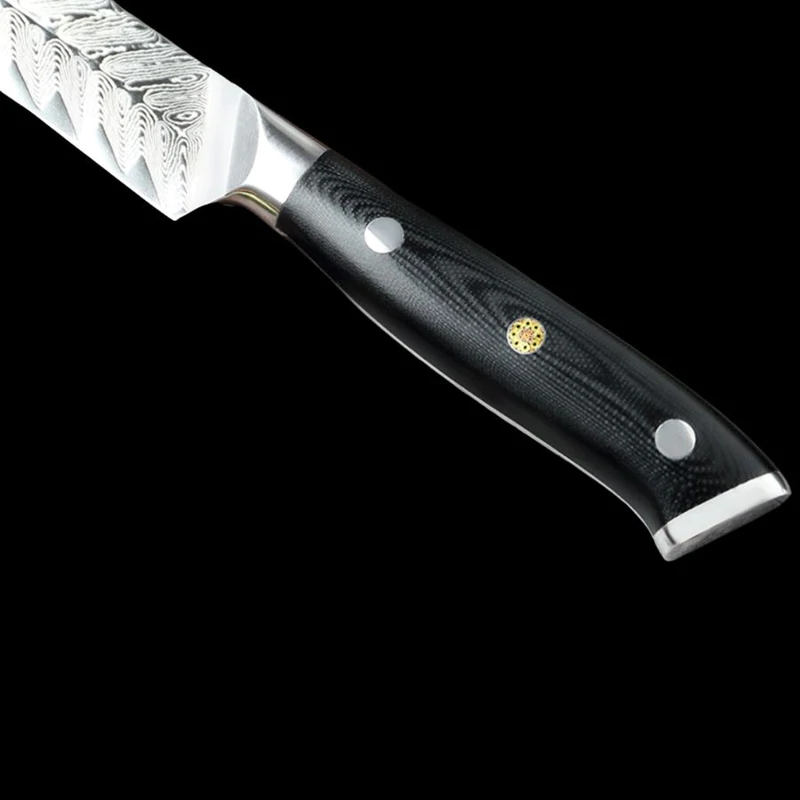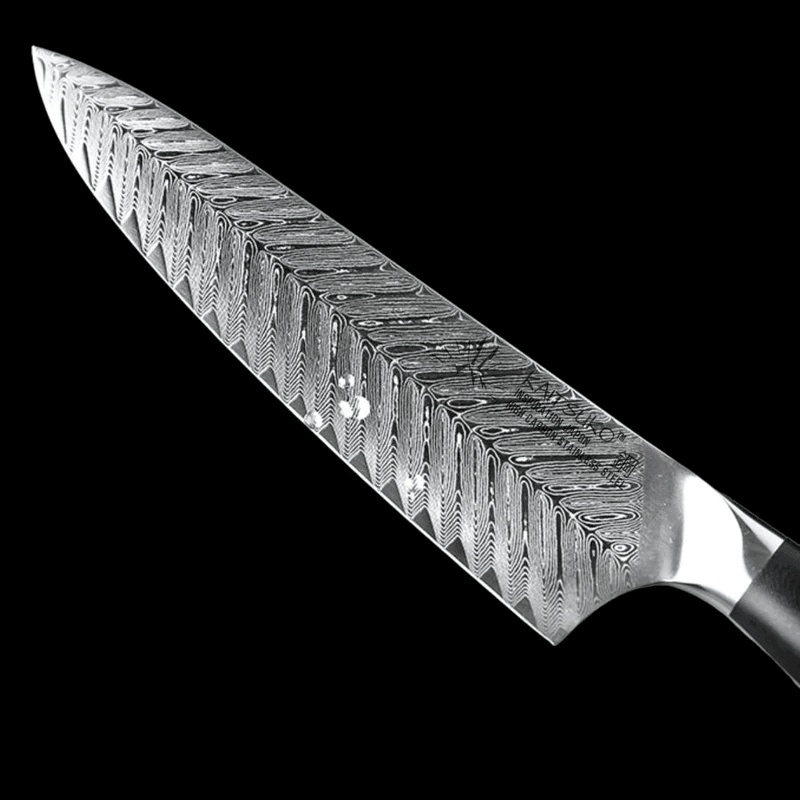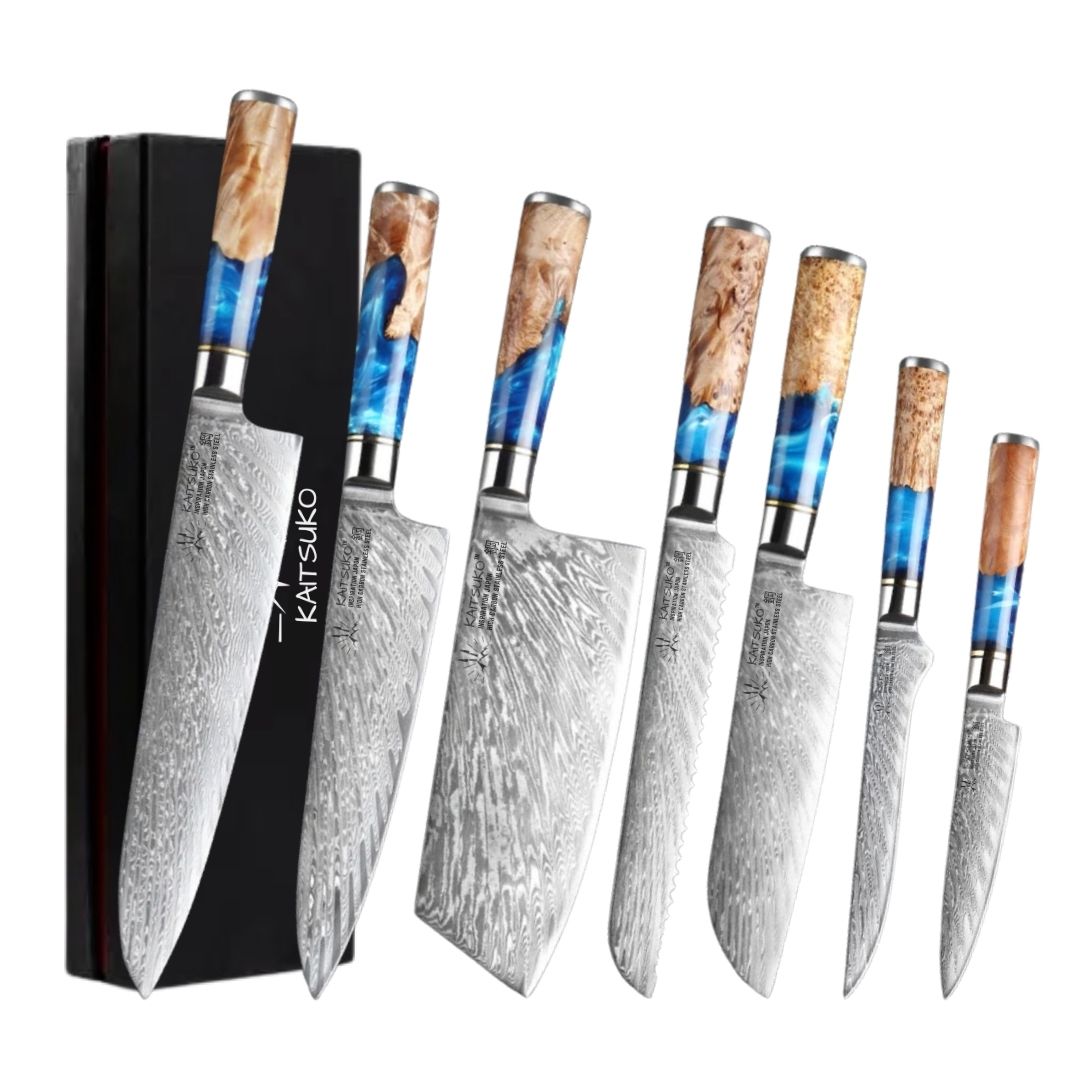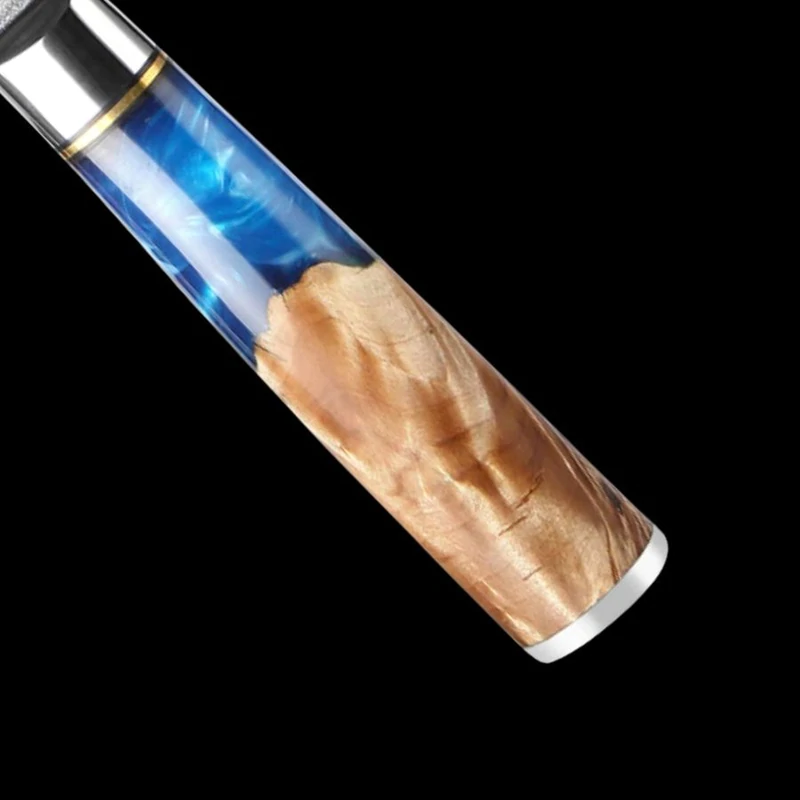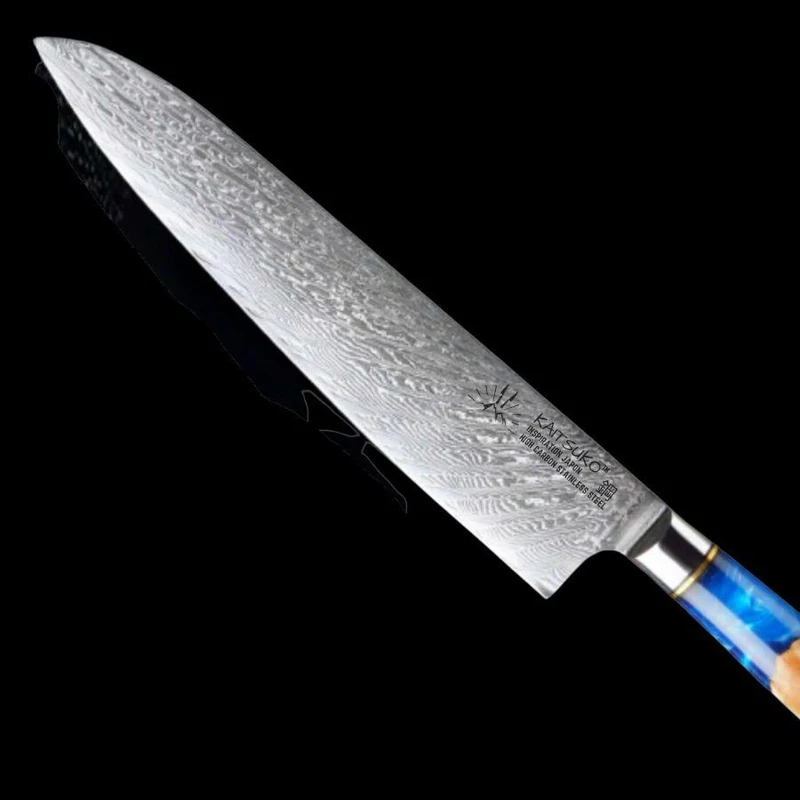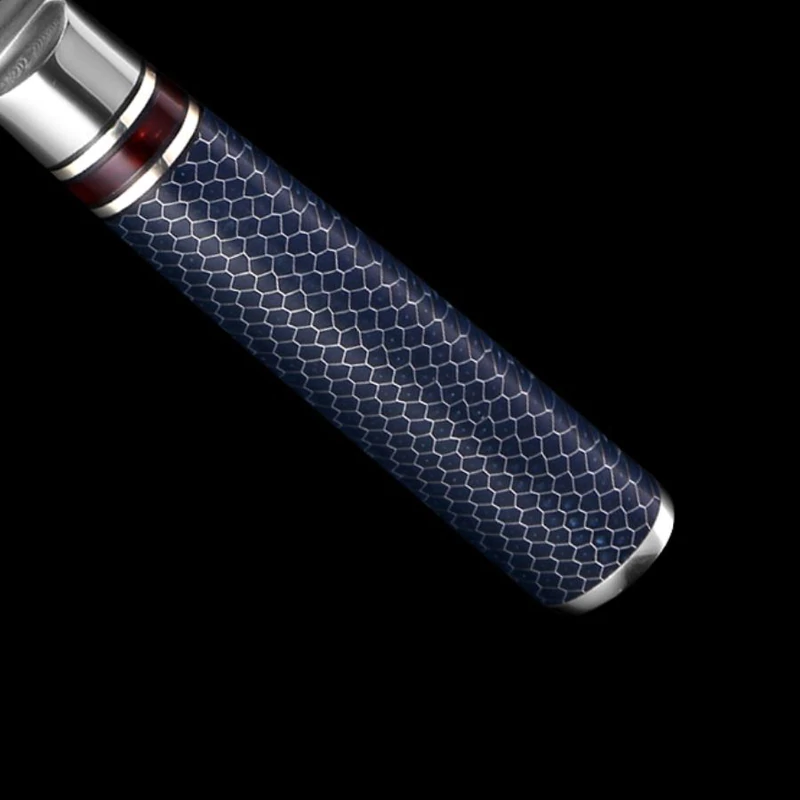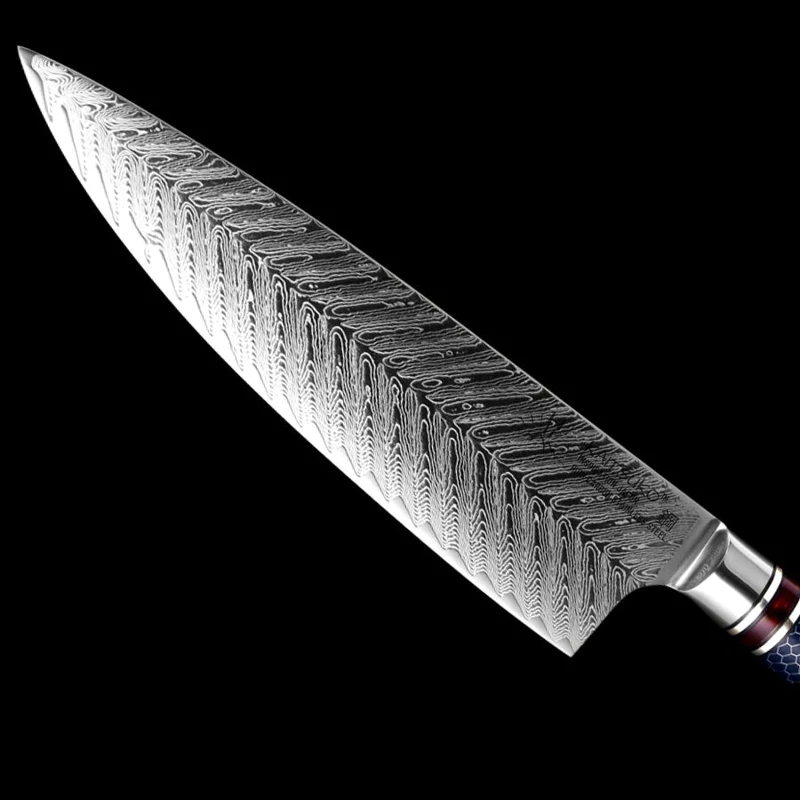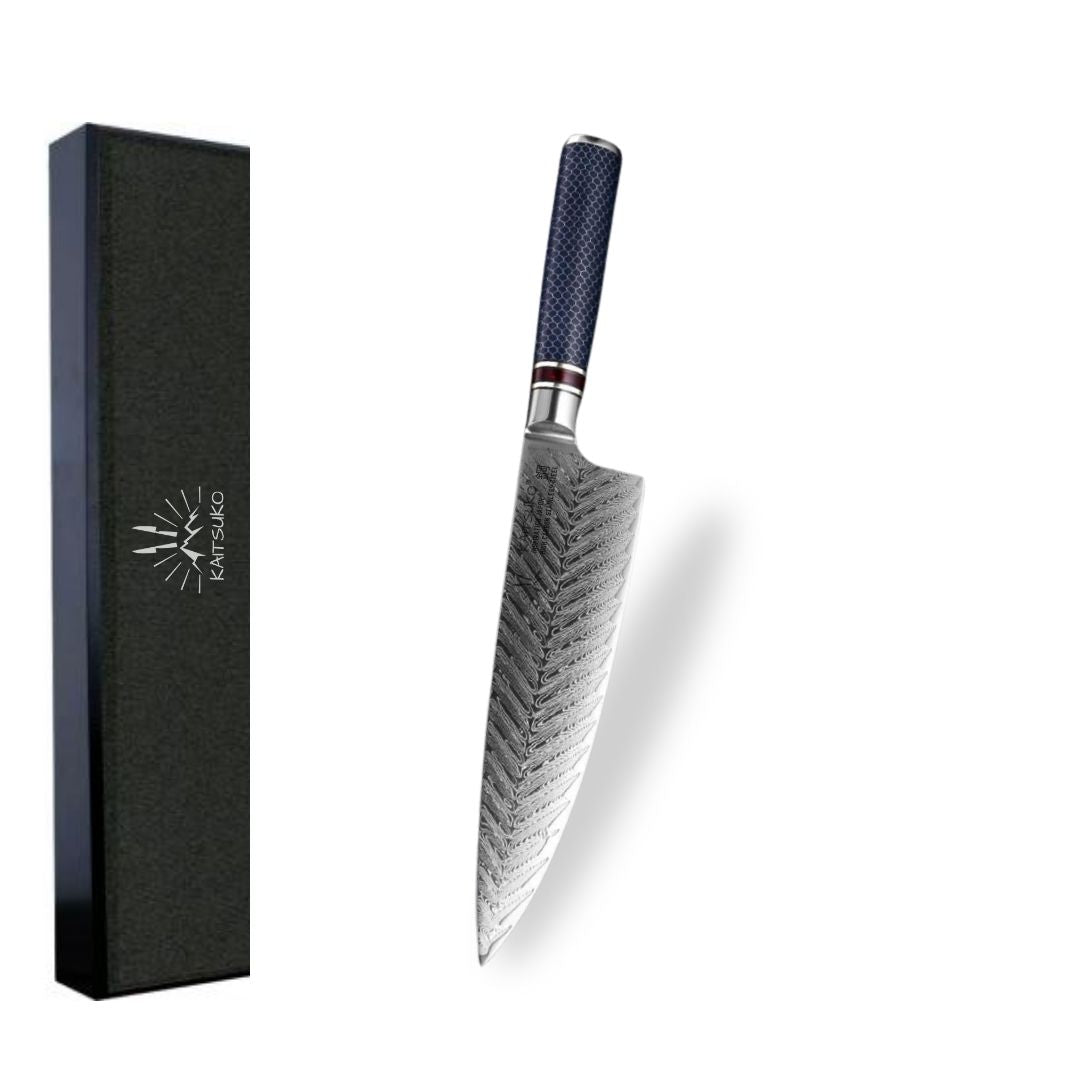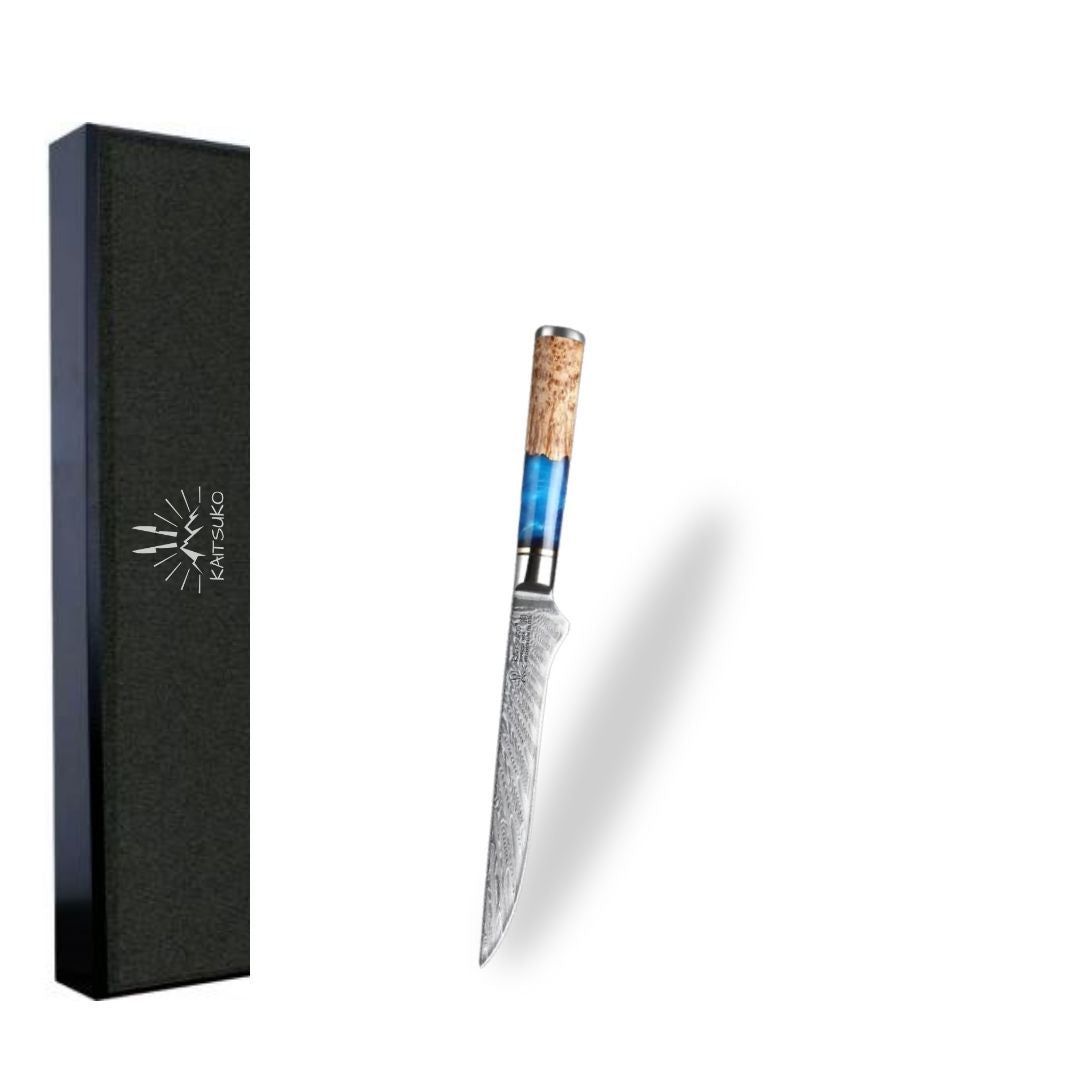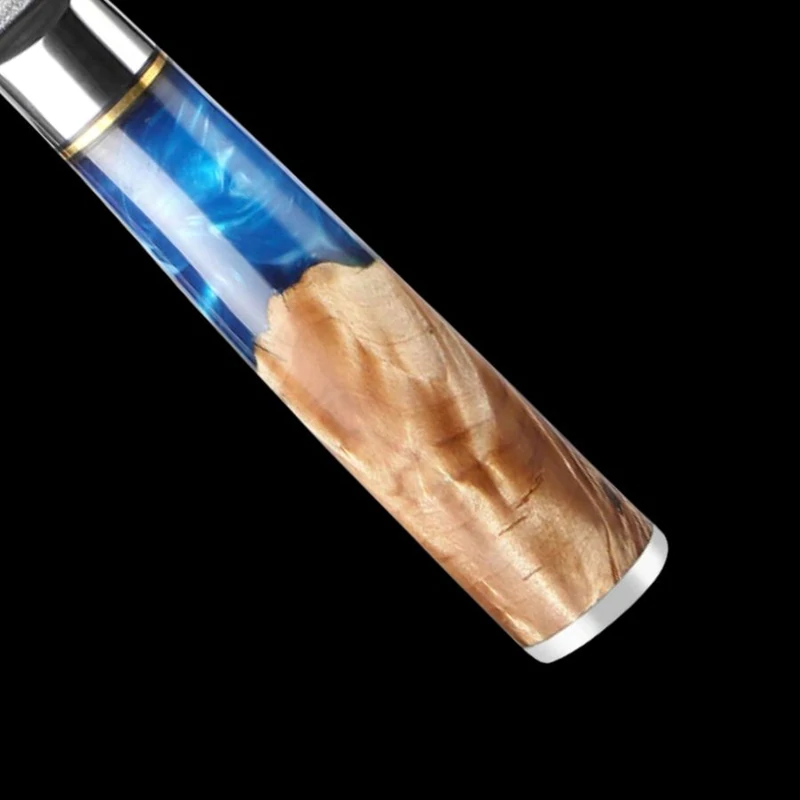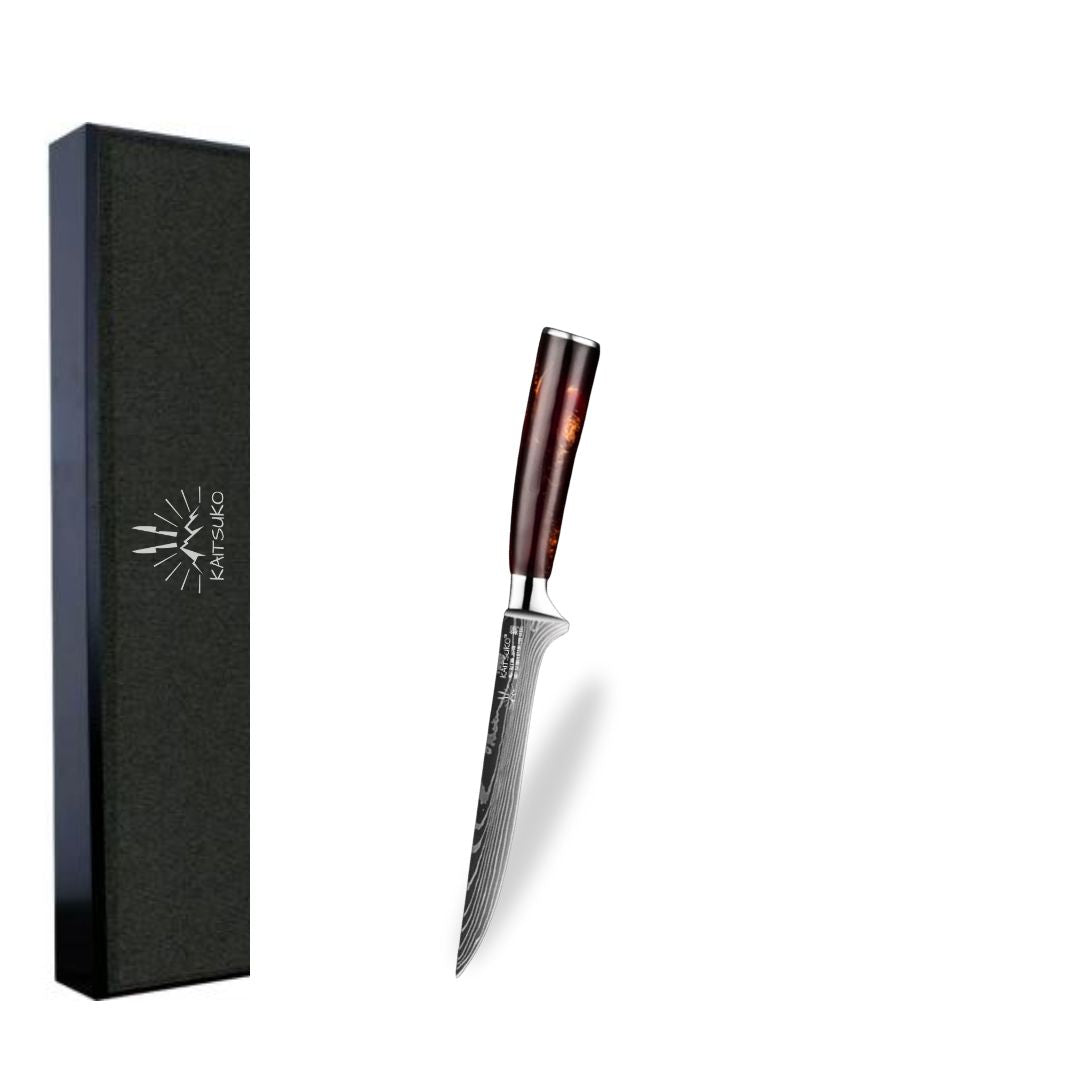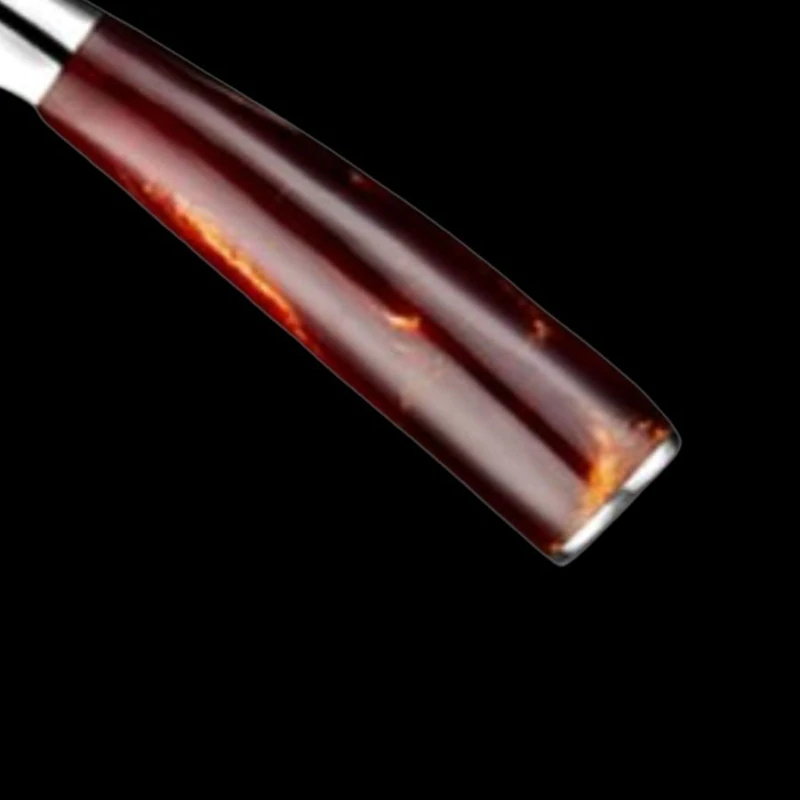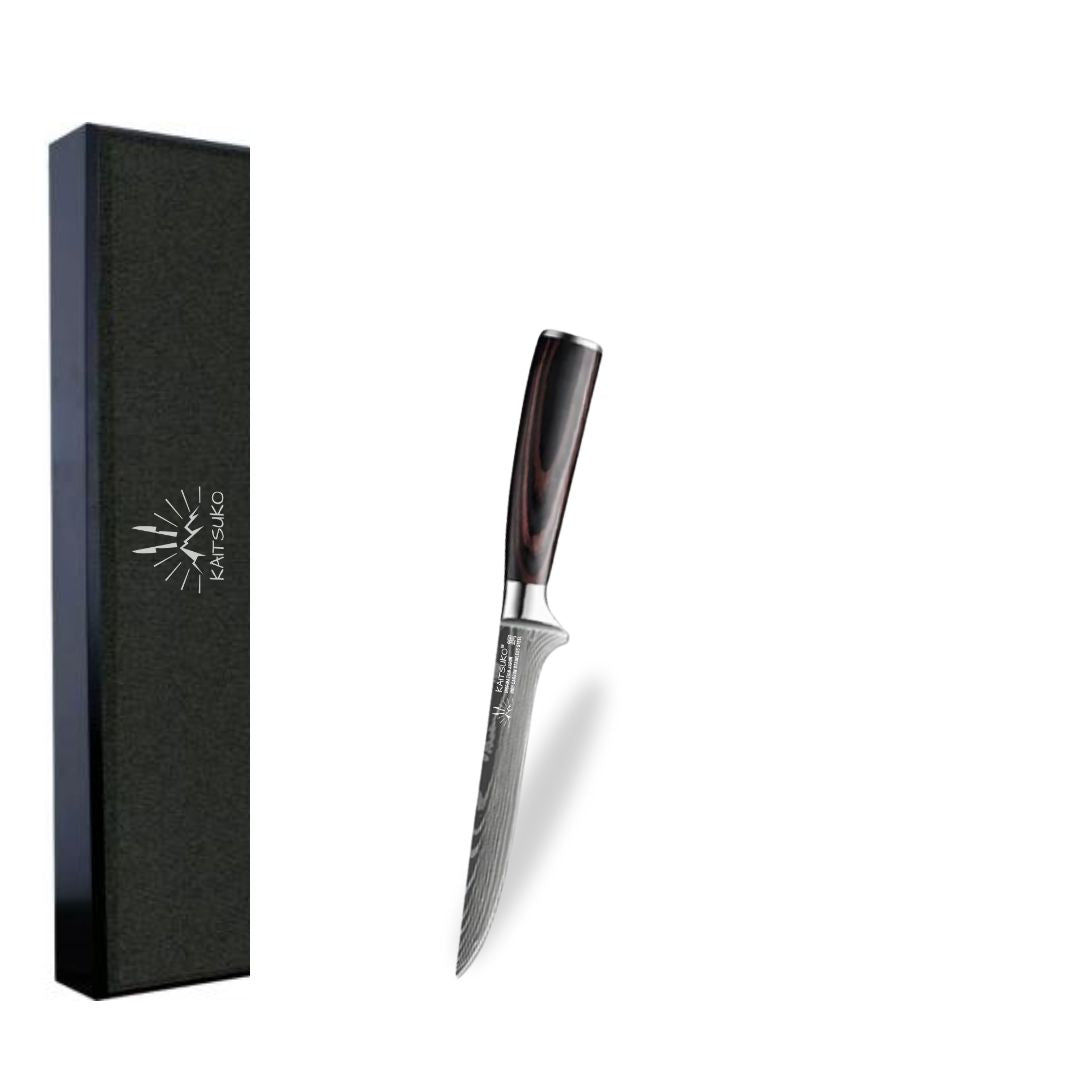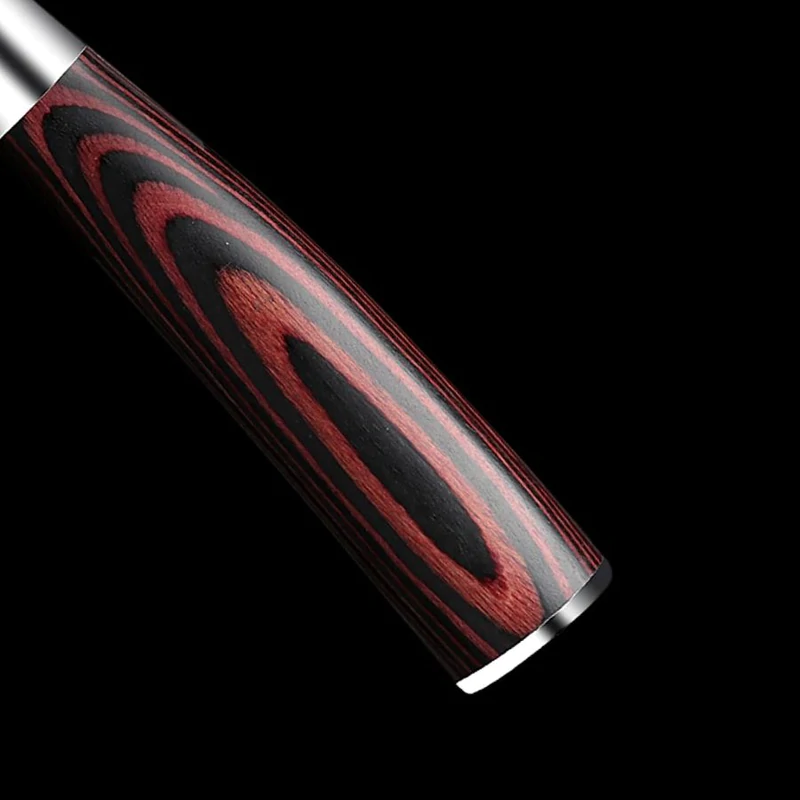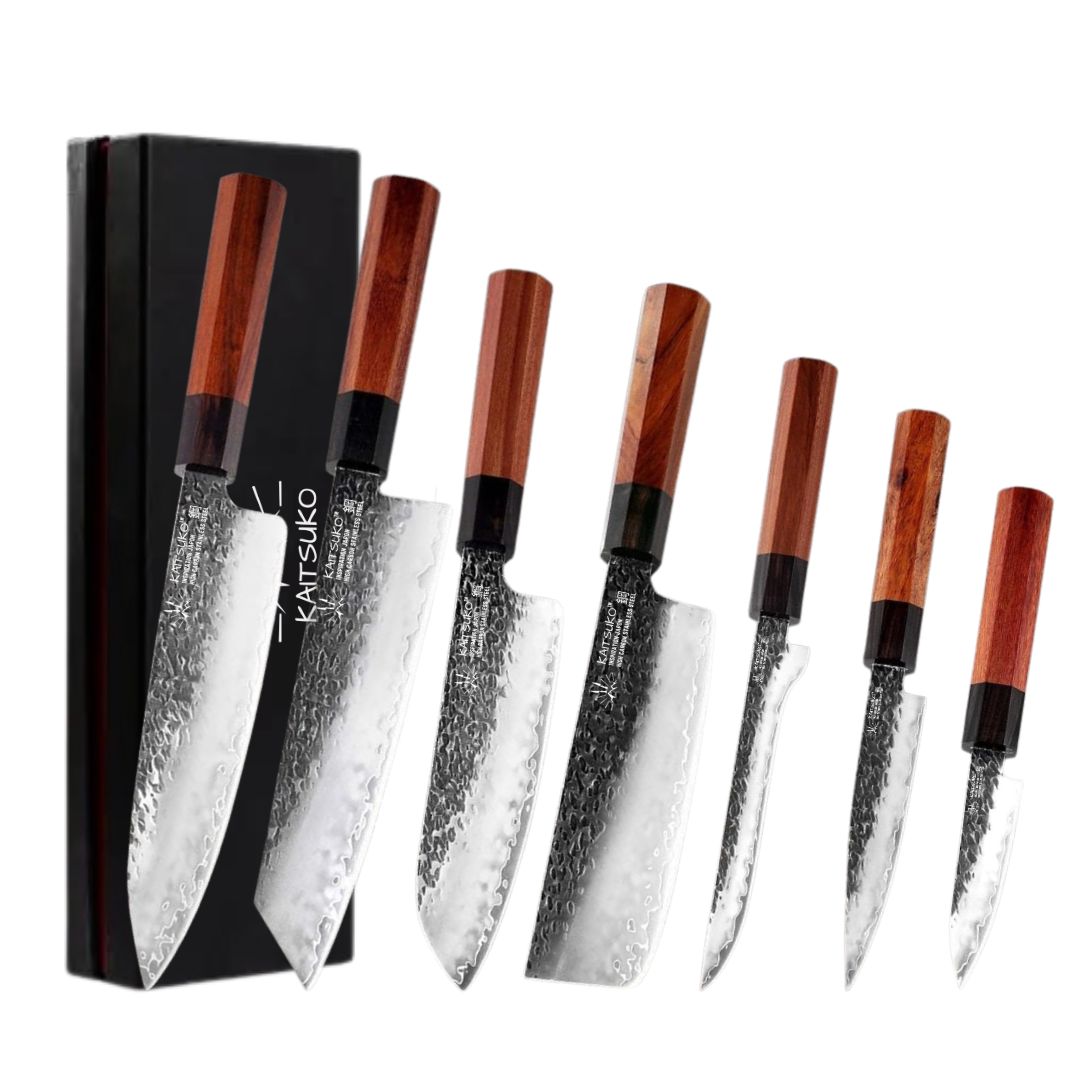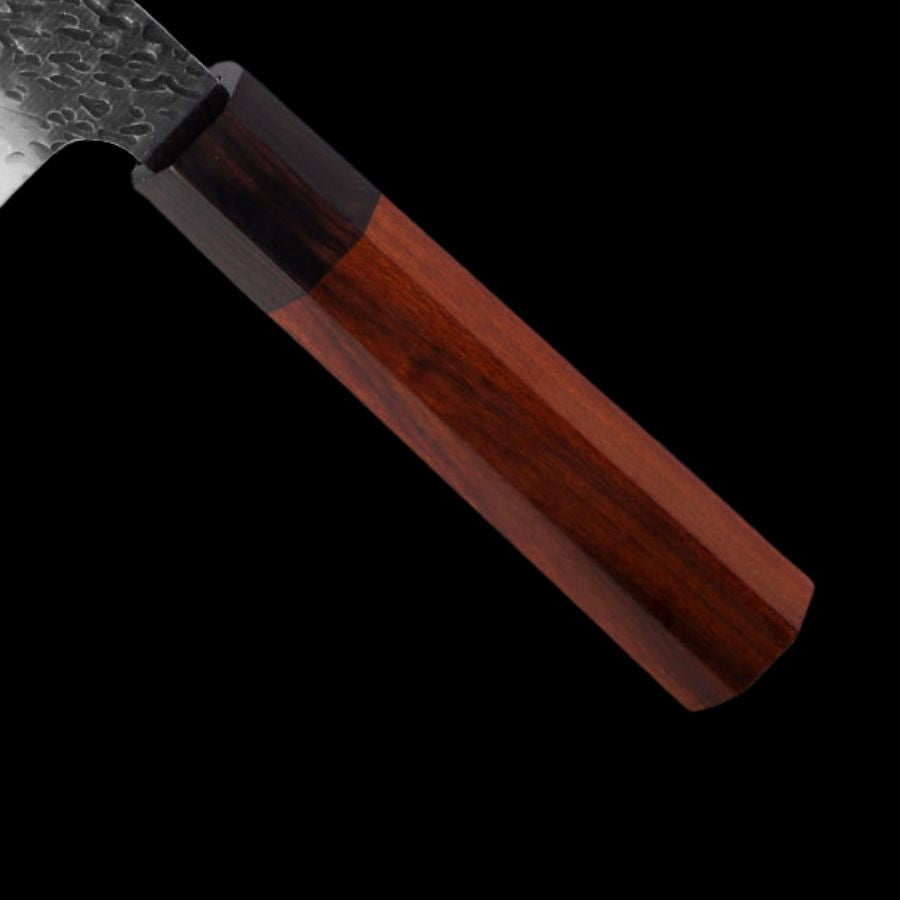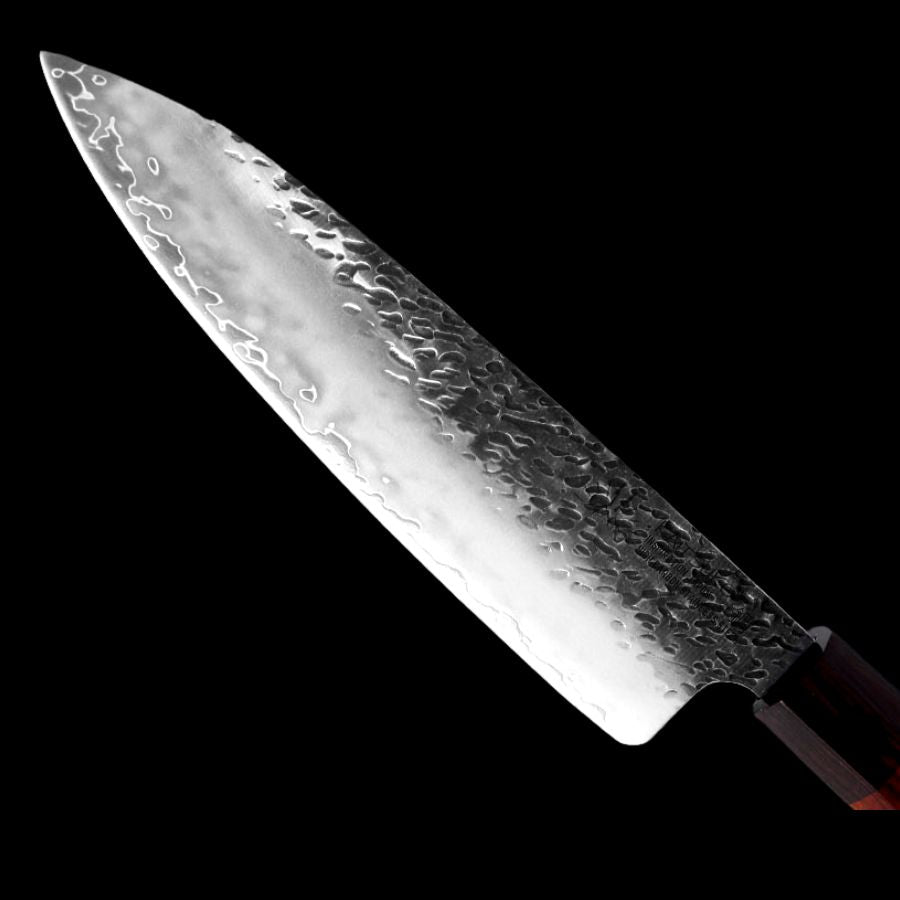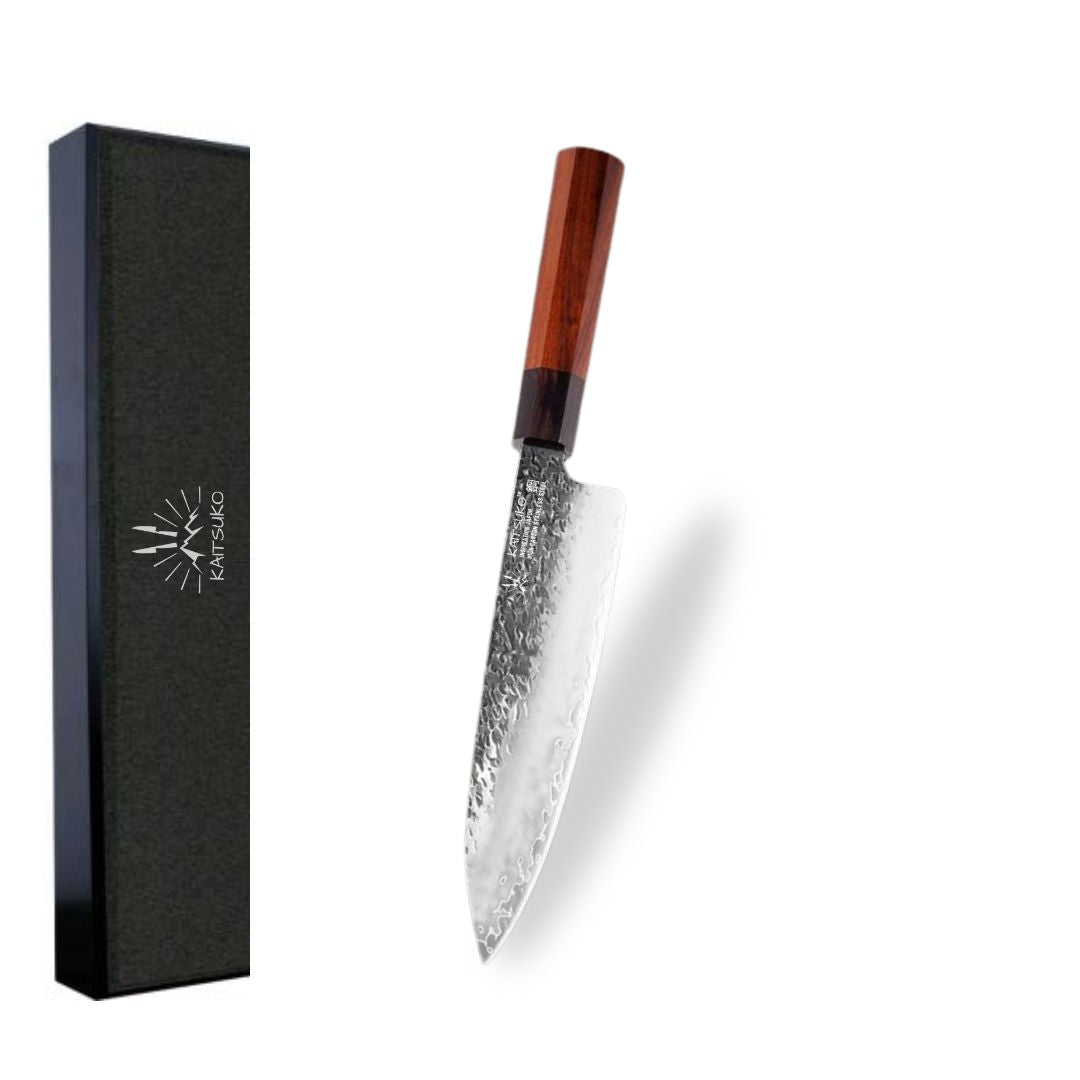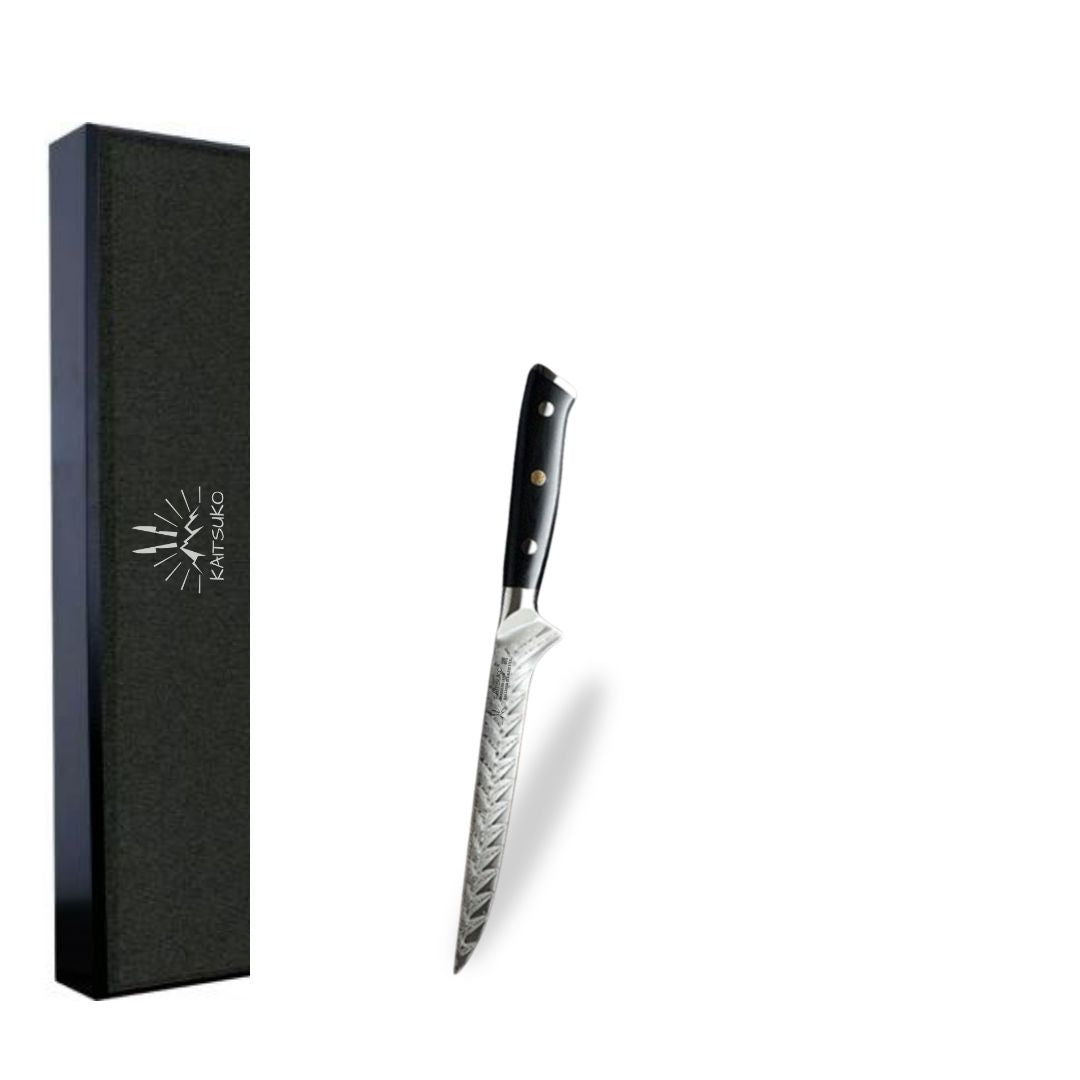Boning knives , true allies of chefs and cooking enthusiasts, are essential tools for precision work .
At Kaitsuko, we offer you a selection of high-quality boning knives, designed to meet the needs of all cooking enthusiasts, from the most novice to the most demanding.
You should know that boning knives are distinguished by their thin and rigid blade , ideal for easily separating the flesh from the bones without damaging it. However, each knife in our collection has been carefully selected for its durability , ergonomics and performance . Let's get into the details!
What is a boning knife?
A boning knife is a type of kitchen knife designed specifically to separate flesh from bones with maximum precision .
Featuring a thin, narrow, rigid blade, it allows for clean, precise cuts, avoiding tearing flesh or leaving residue on bones. This blade, often made of stainless steel, is flexible enough to go around bones while being rigid enough to penetrate tough tissues.
The ergonomics of the handle , generally non-slip , is just as important. It must offer a comfortable and secure grip, to avoid any risk of injury but also to optimize the preparation time and the quality of your dishes!
The Benefits of a Boning Knife
Precision and efficiency
The first advantage of using a boning knife is that it is very precise and efficient .
In a boning knife, the specific design of its blade, thin and rigid, allows to closely follow the contours of the bones , and therefore reduce the risk of wasting flesh . However, this precision not only reduces the preparation time but also improves the quality of the pieces obtained, making your dishes more attractive and above all more professional (if that is your goal).
Additionally, it should be noted that the efficiency of the cut allows you to work faster and with less effort, which is particularly beneficial when preparing large quantities of meat or fish.
Comfort and handling
Contrary to popular belief, boning knives are specifically designed to provide you with optimal comfort thanks to their ergonomic, non-slip handles.
Their lightness and perfect balance therefore help reduce fatigue during long preparation sessions in the kitchen, while ensuring unique handling and movements that are each more precise than the last.
How to choose the right boning knife?
Blade materials
To choose your boning knife, the first step is to select a high-quality stainless steel blade . Also discover our collection of DAMASCUS steel knives or our Mer Jaune collection , renowned for their resistance and unique aesthetics!
Carbon steel blades are highly prized for their exceptional sharpness, although they require more maintenance.
Handle type
For optimal comfort, choose an ergonomic handle that gives you a secure and comfortable grip, even during prolonged use.
Why? Because handles made of non-slip materials , such as rubber or composites, guarantee particularly safe handling, even if you have wet hands.
Blade flexibility
Finally, the flexibility of the blade of a boning knife is not to be outdone. The latter must allow you to follow the contours of the bones with precision, in order to facilitate access to difficult areas and reduce meat waste.
However, it must also be stiff enough to provide control and stability when cutting, so a good balance between flexibility and stiffness is essential for optimum performance.
How to use a boning knife?
Basic techniques
To use a boning knife effectively, start by maintaining a firm but comfortable grip on the handle.
Use the tip of the blade to make precise incisions around bones, following their contours with slow, controlled movements, always making sure to work away from your body to avoid accidents.
Precautions to take
Here are some precautions to take to correctly use a boning knife:
-
Use a stable cutting board : Always work on a stable cutting board to prevent the knife from slipping;
-
Work slowly : Take your time with each cut to avoid accidents and improve accuracy;
-
Keep the blade sharp : A sharp blade reduces the effort required and increases safety by reducing the risk of slipping;
-
Cut away from your body : Always point the blade away from your body and hands to prevent injury;
-
Use protective gloves : Don't hesitate to use cut-resistant gloves for additional protection, especially if you are a novice;
-
Remember to maintain your knife regularly : Finally, clean and dry the knife after each use to prevent corrosion and keep the blade in good condition.
DISCOVER OUR ACCESSORIES TO TAKE CARE OF YOUR KNIVES
Boning knives at Kaitsuko
At Kaitsuko , our boning knives are selected primarily for their superior quality and exceptional durability .
Made with premium materials, they offer unmatched cutting precision and optimal comfort of use. Each knife is thus designed to meet the needs of all cooking enthusiasts, both professional chefs and cooking enthusiasts, ensuring reliable and consistent performance .
Frequently Asked Questions About Boning Knives
How to maintain your boning knife?
To maintain your boning knife, clean it immediately after each use with warm water and mild soap, dry it thoroughly, and don't forget to sharpen it regularly to maintain its sharpness!
How long does a boning knife last?
The lifespan of a boning knife depends mostly on the quality of the knife and the care it receives, but it is important to know that a high-quality knife can last for many years. With proper maintenance, including regular cleaning and frequent sharpening, it can even maintain its optimal performance for a long time!






